Maggie James's Blog, page 19
February 12, 2015
Don't Judge an Author by his/her Book
Fiction Writing as a Catharsis?
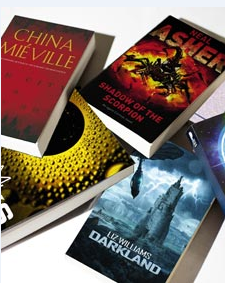 Courtesy of The Guardian Do novelists use their fiction as a catharsis for their personal issues? Since I began my writing journey, I’ve realised that many people believe they do.
Courtesy of The Guardian Do novelists use their fiction as a catharsis for their personal issues? Since I began my writing journey, I’ve realised that many people believe they do.
‘I’m keen to read your books,’ someone once told me. ‘I’ll find out more about what makes you tick.’ I’m paraphrasing, but that was the essence of her words.
‘No, you won’t,’ was my inner response. Her comment got me thinking, however, so I mentioned the conversation to a fellow novelist.
‘A friend of mine believes fiction writers explore their issues via their writing,’ I told her. ‘I think that’s a huge overgeneralisation. I don’t.’
The reply was immediate, its tone dismissive. ‘Of course you do. Don’t all writers?’
I was flabbergasted. It’s a view I strongly contest. Its proponent is, I believe, falsely extrapolating from her own circumstances. For her, writing is indeed a catharsis; she uses her work as a vehicle to explore her childhood issues. She’s not alone. Stephen King has said that he writes about what scares him as a way to exercise his own demons, using fiction as an alternative to therapy. Fair enough, but for me, it seems a flawed assumption to say that all writers are the same. We're not all tortured souls in need of therapy...
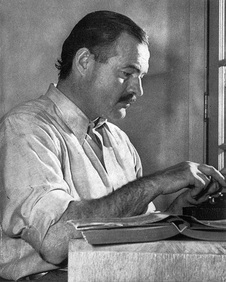 Ernest Hemingway, courtesy of Lloyd Arnold The notion that authors use their novels as a catharsis for exploring their psyche seems a common one, though. Perhaps it comes back to our tendency to embrace one-size-fits-all stereotypes as a convenient, but lazy, way of interpreting the world. Once an image gets into the popular imagination, it sticks. Fiction writers? Aren't they all tortured souls who fuel their literary outpourings during the small hours via copious amounts of alcohol, in between lamenting the perils of writer’s block? Take Ernest Hemingway, right? Case closed.
Ernest Hemingway, courtesy of Lloyd Arnold The notion that authors use their novels as a catharsis for exploring their psyche seems a common one, though. Perhaps it comes back to our tendency to embrace one-size-fits-all stereotypes as a convenient, but lazy, way of interpreting the world. Once an image gets into the popular imagination, it sticks. Fiction writers? Aren't they all tortured souls who fuel their literary outpourings during the small hours via copious amounts of alcohol, in between lamenting the perils of writer’s block? Take Ernest Hemingway, right? Case closed.
The truth is, novelists are a diverse bunch. Sure, some will seek to explore personal issues via their fiction. Others won’t. There’s no cookie-cutter profile that fits all.
I can best give my own position by saying that I’m a private person; the notion of exploring my psyche publicly via my novels fills me with horror. Writing is not, I repeat, not a catharsis for me. None of the terrible issues I inflict upon my long-suffering characters have ever happened in my life. I’ve never been kidnapped, raped, endured a psychotic sibling or absent parents. Phew, plenty of things there for which to be grateful!
My motivation for writing fiction is simple. I love being a novelist. OK, so my books fall into the psychological suspense category. That in itself says nothing about me. Yes, I’m fascinated by the workings of the human mind, but there aren’t many topics in which I’m not interested. Maybe some people will say 'Methinks the lady doth protest too much', but if that's you, then so be it. I can't change how you think, and besides, I'd rather be writing. My fifth novel beckons...
Novelist Iain Rob Wright's take on the subject:
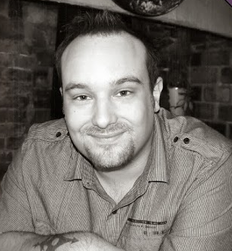 Iain Rob Wright Other fiction writers agree with me. The British horror/thriller novelist Iain Rob Wright said recently on his blog:
Iain Rob Wright Other fiction writers agree with me. The British horror/thriller novelist Iain Rob Wright said recently on his blog:
‘Just because someone has read one of my books, does not mean they know a single thing about me. I write characters with views of their own. If one of my protagonists collects stamps, that does not mean that I do. The truth is that I would never make my own views entirely obvious through my work, because then I am not creating fiction, I am writing propaganda.’ My point exactly!
So to readers of my books, of Iain’s books, to fiction readers in general, I’d say this. Read our novels because you enjoy them, not to discover more about us. Don’t think you can judge an author by his/her books. You can’t presume to know a novelist's motivation for writing, unless they’ve publicly stated it. So what do you think? Let me know!
I’d be interested to hear from other fiction writers. Is your work cathartic for you? If so, to what extent? Readers, do you make assumptions about an author based on what they write? Leave a comment and let me know!
In next week’s blog post, I’ll be examining a similar issue. Can we discern anything about a person based on their choices of fiction reading? If you have any points on this topic you’d like to make, I’d be interested to hear them and may feature your comments. Thanks! Subscribe to my newsletter and blog!
 I'd love to stay in contact with you! Why not sign up for my newsletter? It's an occasional communication to keep you informed about my new novel releases. I respect your privacy and will never sell your details to any third parties. To sign up, enter your details in the form at the top of the sidebar.
I'd love to stay in contact with you! Why not sign up for my newsletter? It's an occasional communication to keep you informed about my new novel releases. I respect your privacy and will never sell your details to any third parties. To sign up, enter your details in the form at the top of the sidebar.
And if you've enjoyed this blog post, how about subscribing via RSS feed or email? Either click the links in my blog sidebar or sign up via Networked Blogs, also in the sidebar. It'll be great to have you on board!
By Maggie James
 Courtesy of The Guardian Do novelists use their fiction as a catharsis for their personal issues? Since I began my writing journey, I’ve realised that many people believe they do.
Courtesy of The Guardian Do novelists use their fiction as a catharsis for their personal issues? Since I began my writing journey, I’ve realised that many people believe they do.‘I’m keen to read your books,’ someone once told me. ‘I’ll find out more about what makes you tick.’ I’m paraphrasing, but that was the essence of her words.
‘No, you won’t,’ was my inner response. Her comment got me thinking, however, so I mentioned the conversation to a fellow novelist.
‘A friend of mine believes fiction writers explore their issues via their writing,’ I told her. ‘I think that’s a huge overgeneralisation. I don’t.’
The reply was immediate, its tone dismissive. ‘Of course you do. Don’t all writers?’
I was flabbergasted. It’s a view I strongly contest. Its proponent is, I believe, falsely extrapolating from her own circumstances. For her, writing is indeed a catharsis; she uses her work as a vehicle to explore her childhood issues. She’s not alone. Stephen King has said that he writes about what scares him as a way to exercise his own demons, using fiction as an alternative to therapy. Fair enough, but for me, it seems a flawed assumption to say that all writers are the same. We're not all tortured souls in need of therapy...
 Ernest Hemingway, courtesy of Lloyd Arnold The notion that authors use their novels as a catharsis for exploring their psyche seems a common one, though. Perhaps it comes back to our tendency to embrace one-size-fits-all stereotypes as a convenient, but lazy, way of interpreting the world. Once an image gets into the popular imagination, it sticks. Fiction writers? Aren't they all tortured souls who fuel their literary outpourings during the small hours via copious amounts of alcohol, in between lamenting the perils of writer’s block? Take Ernest Hemingway, right? Case closed.
Ernest Hemingway, courtesy of Lloyd Arnold The notion that authors use their novels as a catharsis for exploring their psyche seems a common one, though. Perhaps it comes back to our tendency to embrace one-size-fits-all stereotypes as a convenient, but lazy, way of interpreting the world. Once an image gets into the popular imagination, it sticks. Fiction writers? Aren't they all tortured souls who fuel their literary outpourings during the small hours via copious amounts of alcohol, in between lamenting the perils of writer’s block? Take Ernest Hemingway, right? Case closed.The truth is, novelists are a diverse bunch. Sure, some will seek to explore personal issues via their fiction. Others won’t. There’s no cookie-cutter profile that fits all.
I can best give my own position by saying that I’m a private person; the notion of exploring my psyche publicly via my novels fills me with horror. Writing is not, I repeat, not a catharsis for me. None of the terrible issues I inflict upon my long-suffering characters have ever happened in my life. I’ve never been kidnapped, raped, endured a psychotic sibling or absent parents. Phew, plenty of things there for which to be grateful!
My motivation for writing fiction is simple. I love being a novelist. OK, so my books fall into the psychological suspense category. That in itself says nothing about me. Yes, I’m fascinated by the workings of the human mind, but there aren’t many topics in which I’m not interested. Maybe some people will say 'Methinks the lady doth protest too much', but if that's you, then so be it. I can't change how you think, and besides, I'd rather be writing. My fifth novel beckons...
Novelist Iain Rob Wright's take on the subject:
 Iain Rob Wright Other fiction writers agree with me. The British horror/thriller novelist Iain Rob Wright said recently on his blog:
Iain Rob Wright Other fiction writers agree with me. The British horror/thriller novelist Iain Rob Wright said recently on his blog:‘Just because someone has read one of my books, does not mean they know a single thing about me. I write characters with views of their own. If one of my protagonists collects stamps, that does not mean that I do. The truth is that I would never make my own views entirely obvious through my work, because then I am not creating fiction, I am writing propaganda.’ My point exactly!
So to readers of my books, of Iain’s books, to fiction readers in general, I’d say this. Read our novels because you enjoy them, not to discover more about us. Don’t think you can judge an author by his/her books. You can’t presume to know a novelist's motivation for writing, unless they’ve publicly stated it. So what do you think? Let me know!
I’d be interested to hear from other fiction writers. Is your work cathartic for you? If so, to what extent? Readers, do you make assumptions about an author based on what they write? Leave a comment and let me know!
In next week’s blog post, I’ll be examining a similar issue. Can we discern anything about a person based on their choices of fiction reading? If you have any points on this topic you’d like to make, I’d be interested to hear them and may feature your comments. Thanks! Subscribe to my newsletter and blog!
 I'd love to stay in contact with you! Why not sign up for my newsletter? It's an occasional communication to keep you informed about my new novel releases. I respect your privacy and will never sell your details to any third parties. To sign up, enter your details in the form at the top of the sidebar.
I'd love to stay in contact with you! Why not sign up for my newsletter? It's an occasional communication to keep you informed about my new novel releases. I respect your privacy and will never sell your details to any third parties. To sign up, enter your details in the form at the top of the sidebar.And if you've enjoyed this blog post, how about subscribing via RSS feed or email? Either click the links in my blog sidebar or sign up via Networked Blogs, also in the sidebar. It'll be great to have you on board!
By Maggie James
Published on February 12, 2015 04:51
January 31, 2015
5 Unusual Locations for Novels
By Maggie James
 For the last thirty years, I've been a travelholic, indulging my passion for globetrotting as often as possible. Recently, I've read some novels set in unusual locations, which inspired this latest post in the 'Five' series. I'm going to examine five novels all set in places that don't often feature in English-language fiction, none of which I've yet been to. All of them are on my radar, however, for future trips!
For the last thirty years, I've been a travelholic, indulging my passion for globetrotting as often as possible. Recently, I've read some novels set in unusual locations, which inspired this latest post in the 'Five' series. I'm going to examine five novels all set in places that don't often feature in English-language fiction, none of which I've yet been to. All of them are on my radar, however, for future trips!
So sit back, relax, and let's go globetrotting to some wonderful locations, brought to us in fictional form. We'll travel to Mauritius, Bulgaria, St Vincent, Mongolia and Antartica. I'll describe a little about each place, and then talk about a novel that's set there. Maybe this will whet your appetite to read the book, travel to the location, or both!
1. Saint Vincent and the Grenadines
 So beautiful! Saint Vincent and the Grenadines is an island country, part of the Lesser Antilles in the Caribbean. It consists of the main island of Saint Vincent and the northern two-thirds of the Grenadines, a chain of smaller islands stretching south from Saint Vincent. The capital and main port is Kingston. Whilst the official language is English, most Vincentians speak Creole, particularly at home and among friends.
So beautiful! Saint Vincent and the Grenadines is an island country, part of the Lesser Antilles in the Caribbean. It consists of the main island of Saint Vincent and the northern two-thirds of the Grenadines, a chain of smaller islands stretching south from Saint Vincent. The capital and main port is Kingston. Whilst the official language is English, most Vincentians speak Creole, particularly at home and among friends.
Saint Vincent is volcanic, and there is little level ground, with the windward side being very rocky and steep. Banana cultivation dominates the economy, although tourism also plays an important part. The latter was boosted by the filing of the 'Pirates of the Caribbean' movies on the island. Look at the photo - isn't that beautiful?
'Deadlight' by Michael Smart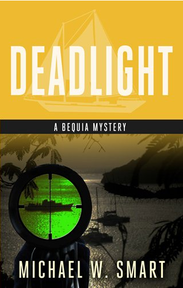 Novelist Michael Smart, who I interviewed for this blog, sets his Bequia mysteries in the Eastern Caribbean, where he spent eight years living and enjoying the sailing. His latest release, Deadlight, has now been published and features Saint Vincent. Here's the synopsis:
Novelist Michael Smart, who I interviewed for this blog, sets his Bequia mysteries in the Eastern Caribbean, where he spent eight years living and enjoying the sailing. His latest release, Deadlight, has now been published and features Saint Vincent. Here's the synopsis:
Commissioner of Police Mike Daniels copes with the political fallout resulting from the scandals uncovered by Superintendent Jolene Johanssen, whilst he investigates the murder of an undercover constable, and completes the task of cleaning up the police force before a new Prime Minister replaces him as Commissioner of Police. Corrupt cops and politicians, and two murders, lead Commissioner Daniels. Superintendent Johanssen and Nicholas Gage to the man behind the conspiracy, and a climactic showdown to save St Vincent and the Grenadines.
Discover more about Michael Smart and the Bequia Mysteries via his website.
2. Mauritius
 Beautiful Mauritius Mauritius is situated in the Indian Ocean, about 1,200 miles off the coast of Africa. It is an island nation, the capital being Port Louis. The climate is tropical, the terrain mountainous and well-forested in parts. The island is of volcanic origin, and thanks to its isolation, is home to a wide variety of flora and fauna, including some of the world's rarest plants and animals.
Beautiful Mauritius Mauritius is situated in the Indian Ocean, about 1,200 miles off the coast of Africa. It is an island nation, the capital being Port Louis. The climate is tropical, the terrain mountainous and well-forested in parts. The island is of volcanic origin, and thanks to its isolation, is home to a wide variety of flora and fauna, including some of the world's rarest plants and animals.
The economy is based on tourism and sugar cultivation, with Mauritius being one of the world's top luxury tourist destinations. It possesses a wide range of natural and man-made attractions, as well as its clear sea waters and attractive beaches, Did I mention sugar cultivation? That leads me on nicely to our featured novel based in Mauritius. Drum roll, please...
'Sugar Cane' by E. E. Fry
 A while ago I interviewed the author of 'Sugar Cane', E.E. Fry, for this blog. Here's the link. Half Mauritian herself, E.E. Fry has a passion for writing about the island. Here's the synopsis for 'Sugar Cane':
A while ago I interviewed the author of 'Sugar Cane', E.E. Fry, for this blog. Here's the link. Half Mauritian herself, E.E. Fry has a passion for writing about the island. Here's the synopsis for 'Sugar Cane':
Beth Stephens' seemingly normal life is turned upside down when her father, George Labelle, passes away and she finds herself travelling to Mauritius to spread his ashes. Set between England and Mauritius during the sixties to the present day, Sugar Cane follows both of their stories, juxtaposing between Beth in life and George from beyond the grave, father and daughter discovering more than they bargained for, especially wherever the beautiful Sahana is concerned....
Sugar Cane has been described as a thriller, a murder mystery, a love story and a travelogue. It challenges the issues of mixed race heritage and identity, providing real characters with real perceptions about how they fit into a world that needs to differentiate one human being from another. Sugar Cane takes you on a journey to a faraway place, where, along with the effects of slavery, Empire and indentured labour, a microcosm has been created over the centuries; the perfect canvas to illustrate what it really means to be free to know who we really are. Welcome to Mauritius.
You can find out more about E. E. Fry (as well as her gorgeous dog Sandy) via her blog, Sandy Bred Publishing.
3. Bulgaria
 The Black Sea coast - how pretty! Bulgaria is a country in south-eastern Europe, the capital being Sofia. Its geography boasts a mixture of mountains and plains, with the Balkans running through the middle of the country.
The Black Sea coast - how pretty! Bulgaria is a country in south-eastern Europe, the capital being Sofia. Its geography boasts a mixture of mountains and plains, with the Balkans running through the middle of the country.
In recent years, Bulgaria has emerged as a tourist destination, offering inexpensive resorts and good beaches. The capital Sofia, the medieval capital Veliko Tarnovo, the coastal resorts of Golden Sands and Sunny Beach, and winter resorts such as Bansko are perenially popular with visitors.
Traditional Bulgarian culture is derived from Thracian, Salvic and Bulgar roots. Many sites are of immense historical importance and are on UNESCO's World Heritage list, such as the Thracian tombs in Sveshtari. Another neat segway, leading me to the novel I'm featuring that's based in Bulgaria:
'Valley of Thracians' by Ellis Shuman
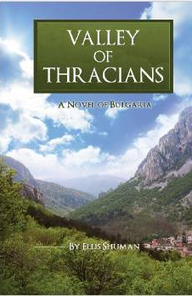 Originally from Iowa, Ellis has been living in Israel since the age of fifteen. He served in the Israeli army, was the founding member of a kibbutz, and currently resides on a moshav outside Jerusalem. He lived and worked in Bulgaria during the years 2009 - 2010.Here's the synopsis for 'Valley of Thracians':
Originally from Iowa, Ellis has been living in Israel since the age of fifteen. He served in the Israeli army, was the founding member of a kibbutz, and currently resides on a moshav outside Jerusalem. He lived and worked in Bulgaria during the years 2009 - 2010.Here's the synopsis for 'Valley of Thracians':
A Peace Corps volunteer has gone missing in Bulgaria and everyone assumes he is dead, everyone except his grandfather, who refuses to give up hope. Retired literature professor Simon Matthews launches a desperate search only to be lured into a bizarre quest to retrieve a stolen Thracian artifact—a unique object of immense value others will stop at nothing to recover. Matthews travels through a Balkan landscape dotted with ancient tombs and fortresses, unaware that his grandson has been confined to an isolated mountain cabin, slowly recovering from a severe head injury. Nothing can be taken at face value, as the woman assisting Matthews in his quest and the nurse caring for his injured grandson may have ulterior motives in helping the two reunite. Even when Matthews succeeds in joining up with his grandson, departure from Bulgaria is only possible if the missing relic can be found.
Find out more about Ellis Shuman and his work via his blog.
4. Mongolia
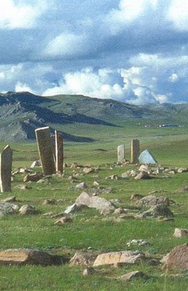 Deer stones in Mongolia Mongolia, home to Ghengis Khan, the founder of the Mongol Empire, is a landlocked country in Central East Asia. The country is known as 'The Land of the Eternal Blue Sky', because it enjoys over 250 days of sunshine per year. The geography is diverse, including the Gobi Desert and cold, mountainous regions in the north and west. Much of Mongolia consists of steppe landscapes and forests. Mongolia is cold, high and windy; its capital, Ulan Baatar, is the world's coldest, with an annual average temperature of 0 degrees Celsius.
Deer stones in Mongolia Mongolia, home to Ghengis Khan, the founder of the Mongol Empire, is a landlocked country in Central East Asia. The country is known as 'The Land of the Eternal Blue Sky', because it enjoys over 250 days of sunshine per year. The geography is diverse, including the Gobi Desert and cold, mountainous regions in the north and west. Much of Mongolia consists of steppe landscapes and forests. Mongolia is cold, high and windy; its capital, Ulan Baatar, is the world's coldest, with an annual average temperature of 0 degrees Celsius.
Despite being the world's 19th largest country, Mongolia's population is small, being just under 3 million people. That's a lot of room to move! The steppe and desert landscape renders much of the country uninhabitable, however - not even the hardy Bactrian camel can survive in the Mongolian desert wastes. Crime, however, can and does flourish in Mongolia - as evidenced by my featured book:
'The Shadow Walker' by Michael Walters
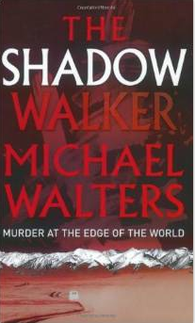 Set in a country struggling to come to terms with the legacy of its past and the promise of its future, The Shadow Walker is a gripping thriller that introduces Inspector Nergui of the Mongolian Serious Crime squad. As winter's first snow falls on Ulan Baatar, the mutilated body of a British geologist is found in the city's most expensive hotel, apparently the fourth victim of a serial killer. With political pressure to solve the crimes mounting, Negrui, ex-head of the Serious Crime Squad, is ordered back to his former role, building an uneasy working relationship with his successor and protégé, Doripalam, and with Drew McLeish, a senior British CID officer sent out to support the investigation. But the murders continue - leading the officers through the disused factories of the decaying city, out on to the steppes among nomadic herdsmen and illegal gold prospectors, and down into the barren landscapes of the Gobi. And then McLeish himself is kidnapped. With political tensions mounting and time draining away, Nergui and Doripalam piece together a case that encompasses both personal tragedy and shadowy commercial interests in Mongolia's vast mineral and energy reserves. And, finally, in a long-abandoned warehouse amongst the decaying Soviet-era factories of Ulan Baatar, Nergui comes face to face with the only figure who can bring the story to its shattering conclusion.
Set in a country struggling to come to terms with the legacy of its past and the promise of its future, The Shadow Walker is a gripping thriller that introduces Inspector Nergui of the Mongolian Serious Crime squad. As winter's first snow falls on Ulan Baatar, the mutilated body of a British geologist is found in the city's most expensive hotel, apparently the fourth victim of a serial killer. With political pressure to solve the crimes mounting, Negrui, ex-head of the Serious Crime Squad, is ordered back to his former role, building an uneasy working relationship with his successor and protégé, Doripalam, and with Drew McLeish, a senior British CID officer sent out to support the investigation. But the murders continue - leading the officers through the disused factories of the decaying city, out on to the steppes among nomadic herdsmen and illegal gold prospectors, and down into the barren landscapes of the Gobi. And then McLeish himself is kidnapped. With political tensions mounting and time draining away, Nergui and Doripalam piece together a case that encompasses both personal tragedy and shadowy commercial interests in Mongolia's vast mineral and energy reserves. And, finally, in a long-abandoned warehouse amongst the decaying Soviet-era factories of Ulan Baatar, Nergui comes face to face with the only figure who can bring the story to its shattering conclusion.
You can find out more about Michael Walters and his books via his blog. 5. Antarctica
 A stunning Antarctic vista Beautiful and fragile Antarctica has long been on my radar when it comes to places to visit, spurred on by one friend who's already been and another who's announced that she's going. It's the world's most southerly continent, as well as the coldest, and includes the South Pole. At 5.4 million square miles, Antarctica is big, being nearly twice the size of Australia.
A stunning Antarctic vista Beautiful and fragile Antarctica has long been on my radar when it comes to places to visit, spurred on by one friend who's already been and another who's announced that she's going. It's the world's most southerly continent, as well as the coldest, and includes the South Pole. At 5.4 million square miles, Antarctica is big, being nearly twice the size of Australia.
Although it's not what most of us think of when we picture a desert, Antartica only receives about eight inches of rain per year, mostly in coastal areas. Did I mention it's cold? Hell. yeah! The temperature in Antarctica has reached as low as −89 °C (−129 °F). Now that's chilly! Due to the harsh envionment, there are no permanent human residents, but between 1,000 to 5,000 people work at the research stations scattered across the continent. Only cold-adapted organisms survive, such as penguins, seals, algae and bacteria.
Makes you wonder what scope such an unforgiving, if beautiful, land can offer a novelist. Enter my fifth featured novel:
'Blood and Ice' by Robert Masello
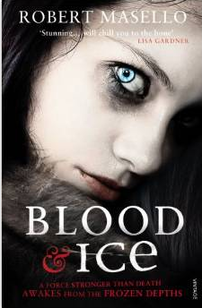 Blood and Ice I came across 'Blood and Ice' by accident, attracted by the back blurb when browsing in my local library. At the time, I didn't realise it was a vampire novel, but 'Blood and Ice' doesn't deal with bloodthirsty teenagers chomping on each other's necks. Instead, it's a classy and interesting story, set in a remote Antarctic research station. Here's the synopsis:
Blood and Ice I came across 'Blood and Ice' by accident, attracted by the back blurb when browsing in my local library. At the time, I didn't realise it was a vampire novel, but 'Blood and Ice' doesn't deal with bloodthirsty teenagers chomping on each other's necks. Instead, it's a classy and interesting story, set in a remote Antarctic research station. Here's the synopsis:
When journalist Michael Wilde is commissioned to write a feature about a remote research station deep in the frozen beauty of Antarctica, he is prepared for some extraordinary sights. But on a diving expedition in the polar sea he comes across something so extraordinary to be almost unbelievable - a man and woman chained together, deep in the ice. The doomed lovers are brought to the surface but as the ice begins to thaw the scientists discover the unusual contents of the bottles buried behind the pair, and realise they are all in terrible danger...
You can find out more about Robert Masello and his books via his website, www.robertmasello.com.
I'd love to hear from you! Can you add to this list?
 Are there any memorable novels that you've enjoyed that are located in unusual countries? How well did the author portray the country? Did it make you yearn to visit and find out more? Leave me a comment and let me know!
Are there any memorable novels that you've enjoyed that are located in unusual countries? How well did the author portray the country? Did it make you yearn to visit and find out more? Leave me a comment and let me know!
Subscribe to my newsletter and blog!
 I'd love to stay in contact with you! Why not sign up for my newsletter? It's an occasional communication to keep you informed about my new novel releases. I respect your privacy and will never sell your details to any third parties. To sign up, enter your details in the form at the top of the sidebar.
I'd love to stay in contact with you! Why not sign up for my newsletter? It's an occasional communication to keep you informed about my new novel releases. I respect your privacy and will never sell your details to any third parties. To sign up, enter your details in the form at the top of the sidebar.
And if you've enjoyed this blog post, how about subscribing via RSS feed or email? Either click the links in my blog sidebar or sign up via Networked Blogs, also in the sidebar. It'll be great to have you on board!
 For the last thirty years, I've been a travelholic, indulging my passion for globetrotting as often as possible. Recently, I've read some novels set in unusual locations, which inspired this latest post in the 'Five' series. I'm going to examine five novels all set in places that don't often feature in English-language fiction, none of which I've yet been to. All of them are on my radar, however, for future trips!
For the last thirty years, I've been a travelholic, indulging my passion for globetrotting as often as possible. Recently, I've read some novels set in unusual locations, which inspired this latest post in the 'Five' series. I'm going to examine five novels all set in places that don't often feature in English-language fiction, none of which I've yet been to. All of them are on my radar, however, for future trips!So sit back, relax, and let's go globetrotting to some wonderful locations, brought to us in fictional form. We'll travel to Mauritius, Bulgaria, St Vincent, Mongolia and Antartica. I'll describe a little about each place, and then talk about a novel that's set there. Maybe this will whet your appetite to read the book, travel to the location, or both!
1. Saint Vincent and the Grenadines
 So beautiful! Saint Vincent and the Grenadines is an island country, part of the Lesser Antilles in the Caribbean. It consists of the main island of Saint Vincent and the northern two-thirds of the Grenadines, a chain of smaller islands stretching south from Saint Vincent. The capital and main port is Kingston. Whilst the official language is English, most Vincentians speak Creole, particularly at home and among friends.
So beautiful! Saint Vincent and the Grenadines is an island country, part of the Lesser Antilles in the Caribbean. It consists of the main island of Saint Vincent and the northern two-thirds of the Grenadines, a chain of smaller islands stretching south from Saint Vincent. The capital and main port is Kingston. Whilst the official language is English, most Vincentians speak Creole, particularly at home and among friends.Saint Vincent is volcanic, and there is little level ground, with the windward side being very rocky and steep. Banana cultivation dominates the economy, although tourism also plays an important part. The latter was boosted by the filing of the 'Pirates of the Caribbean' movies on the island. Look at the photo - isn't that beautiful?
'Deadlight' by Michael Smart
 Novelist Michael Smart, who I interviewed for this blog, sets his Bequia mysteries in the Eastern Caribbean, where he spent eight years living and enjoying the sailing. His latest release, Deadlight, has now been published and features Saint Vincent. Here's the synopsis:
Novelist Michael Smart, who I interviewed for this blog, sets his Bequia mysteries in the Eastern Caribbean, where he spent eight years living and enjoying the sailing. His latest release, Deadlight, has now been published and features Saint Vincent. Here's the synopsis:Commissioner of Police Mike Daniels copes with the political fallout resulting from the scandals uncovered by Superintendent Jolene Johanssen, whilst he investigates the murder of an undercover constable, and completes the task of cleaning up the police force before a new Prime Minister replaces him as Commissioner of Police. Corrupt cops and politicians, and two murders, lead Commissioner Daniels. Superintendent Johanssen and Nicholas Gage to the man behind the conspiracy, and a climactic showdown to save St Vincent and the Grenadines.
Discover more about Michael Smart and the Bequia Mysteries via his website.
2. Mauritius
 Beautiful Mauritius Mauritius is situated in the Indian Ocean, about 1,200 miles off the coast of Africa. It is an island nation, the capital being Port Louis. The climate is tropical, the terrain mountainous and well-forested in parts. The island is of volcanic origin, and thanks to its isolation, is home to a wide variety of flora and fauna, including some of the world's rarest plants and animals.
Beautiful Mauritius Mauritius is situated in the Indian Ocean, about 1,200 miles off the coast of Africa. It is an island nation, the capital being Port Louis. The climate is tropical, the terrain mountainous and well-forested in parts. The island is of volcanic origin, and thanks to its isolation, is home to a wide variety of flora and fauna, including some of the world's rarest plants and animals. The economy is based on tourism and sugar cultivation, with Mauritius being one of the world's top luxury tourist destinations. It possesses a wide range of natural and man-made attractions, as well as its clear sea waters and attractive beaches, Did I mention sugar cultivation? That leads me on nicely to our featured novel based in Mauritius. Drum roll, please...
'Sugar Cane' by E. E. Fry
 A while ago I interviewed the author of 'Sugar Cane', E.E. Fry, for this blog. Here's the link. Half Mauritian herself, E.E. Fry has a passion for writing about the island. Here's the synopsis for 'Sugar Cane':
A while ago I interviewed the author of 'Sugar Cane', E.E. Fry, for this blog. Here's the link. Half Mauritian herself, E.E. Fry has a passion for writing about the island. Here's the synopsis for 'Sugar Cane':Beth Stephens' seemingly normal life is turned upside down when her father, George Labelle, passes away and she finds herself travelling to Mauritius to spread his ashes. Set between England and Mauritius during the sixties to the present day, Sugar Cane follows both of their stories, juxtaposing between Beth in life and George from beyond the grave, father and daughter discovering more than they bargained for, especially wherever the beautiful Sahana is concerned....
Sugar Cane has been described as a thriller, a murder mystery, a love story and a travelogue. It challenges the issues of mixed race heritage and identity, providing real characters with real perceptions about how they fit into a world that needs to differentiate one human being from another. Sugar Cane takes you on a journey to a faraway place, where, along with the effects of slavery, Empire and indentured labour, a microcosm has been created over the centuries; the perfect canvas to illustrate what it really means to be free to know who we really are. Welcome to Mauritius.
You can find out more about E. E. Fry (as well as her gorgeous dog Sandy) via her blog, Sandy Bred Publishing.
3. Bulgaria
 The Black Sea coast - how pretty! Bulgaria is a country in south-eastern Europe, the capital being Sofia. Its geography boasts a mixture of mountains and plains, with the Balkans running through the middle of the country.
The Black Sea coast - how pretty! Bulgaria is a country in south-eastern Europe, the capital being Sofia. Its geography boasts a mixture of mountains and plains, with the Balkans running through the middle of the country.In recent years, Bulgaria has emerged as a tourist destination, offering inexpensive resorts and good beaches. The capital Sofia, the medieval capital Veliko Tarnovo, the coastal resorts of Golden Sands and Sunny Beach, and winter resorts such as Bansko are perenially popular with visitors.
Traditional Bulgarian culture is derived from Thracian, Salvic and Bulgar roots. Many sites are of immense historical importance and are on UNESCO's World Heritage list, such as the Thracian tombs in Sveshtari. Another neat segway, leading me to the novel I'm featuring that's based in Bulgaria:
'Valley of Thracians' by Ellis Shuman
 Originally from Iowa, Ellis has been living in Israel since the age of fifteen. He served in the Israeli army, was the founding member of a kibbutz, and currently resides on a moshav outside Jerusalem. He lived and worked in Bulgaria during the years 2009 - 2010.Here's the synopsis for 'Valley of Thracians':
Originally from Iowa, Ellis has been living in Israel since the age of fifteen. He served in the Israeli army, was the founding member of a kibbutz, and currently resides on a moshav outside Jerusalem. He lived and worked in Bulgaria during the years 2009 - 2010.Here's the synopsis for 'Valley of Thracians':A Peace Corps volunteer has gone missing in Bulgaria and everyone assumes he is dead, everyone except his grandfather, who refuses to give up hope. Retired literature professor Simon Matthews launches a desperate search only to be lured into a bizarre quest to retrieve a stolen Thracian artifact—a unique object of immense value others will stop at nothing to recover. Matthews travels through a Balkan landscape dotted with ancient tombs and fortresses, unaware that his grandson has been confined to an isolated mountain cabin, slowly recovering from a severe head injury. Nothing can be taken at face value, as the woman assisting Matthews in his quest and the nurse caring for his injured grandson may have ulterior motives in helping the two reunite. Even when Matthews succeeds in joining up with his grandson, departure from Bulgaria is only possible if the missing relic can be found.
Find out more about Ellis Shuman and his work via his blog.
4. Mongolia
 Deer stones in Mongolia Mongolia, home to Ghengis Khan, the founder of the Mongol Empire, is a landlocked country in Central East Asia. The country is known as 'The Land of the Eternal Blue Sky', because it enjoys over 250 days of sunshine per year. The geography is diverse, including the Gobi Desert and cold, mountainous regions in the north and west. Much of Mongolia consists of steppe landscapes and forests. Mongolia is cold, high and windy; its capital, Ulan Baatar, is the world's coldest, with an annual average temperature of 0 degrees Celsius.
Deer stones in Mongolia Mongolia, home to Ghengis Khan, the founder of the Mongol Empire, is a landlocked country in Central East Asia. The country is known as 'The Land of the Eternal Blue Sky', because it enjoys over 250 days of sunshine per year. The geography is diverse, including the Gobi Desert and cold, mountainous regions in the north and west. Much of Mongolia consists of steppe landscapes and forests. Mongolia is cold, high and windy; its capital, Ulan Baatar, is the world's coldest, with an annual average temperature of 0 degrees Celsius.Despite being the world's 19th largest country, Mongolia's population is small, being just under 3 million people. That's a lot of room to move! The steppe and desert landscape renders much of the country uninhabitable, however - not even the hardy Bactrian camel can survive in the Mongolian desert wastes. Crime, however, can and does flourish in Mongolia - as evidenced by my featured book:
'The Shadow Walker' by Michael Walters
 Set in a country struggling to come to terms with the legacy of its past and the promise of its future, The Shadow Walker is a gripping thriller that introduces Inspector Nergui of the Mongolian Serious Crime squad. As winter's first snow falls on Ulan Baatar, the mutilated body of a British geologist is found in the city's most expensive hotel, apparently the fourth victim of a serial killer. With political pressure to solve the crimes mounting, Negrui, ex-head of the Serious Crime Squad, is ordered back to his former role, building an uneasy working relationship with his successor and protégé, Doripalam, and with Drew McLeish, a senior British CID officer sent out to support the investigation. But the murders continue - leading the officers through the disused factories of the decaying city, out on to the steppes among nomadic herdsmen and illegal gold prospectors, and down into the barren landscapes of the Gobi. And then McLeish himself is kidnapped. With political tensions mounting and time draining away, Nergui and Doripalam piece together a case that encompasses both personal tragedy and shadowy commercial interests in Mongolia's vast mineral and energy reserves. And, finally, in a long-abandoned warehouse amongst the decaying Soviet-era factories of Ulan Baatar, Nergui comes face to face with the only figure who can bring the story to its shattering conclusion.
Set in a country struggling to come to terms with the legacy of its past and the promise of its future, The Shadow Walker is a gripping thriller that introduces Inspector Nergui of the Mongolian Serious Crime squad. As winter's first snow falls on Ulan Baatar, the mutilated body of a British geologist is found in the city's most expensive hotel, apparently the fourth victim of a serial killer. With political pressure to solve the crimes mounting, Negrui, ex-head of the Serious Crime Squad, is ordered back to his former role, building an uneasy working relationship with his successor and protégé, Doripalam, and with Drew McLeish, a senior British CID officer sent out to support the investigation. But the murders continue - leading the officers through the disused factories of the decaying city, out on to the steppes among nomadic herdsmen and illegal gold prospectors, and down into the barren landscapes of the Gobi. And then McLeish himself is kidnapped. With political tensions mounting and time draining away, Nergui and Doripalam piece together a case that encompasses both personal tragedy and shadowy commercial interests in Mongolia's vast mineral and energy reserves. And, finally, in a long-abandoned warehouse amongst the decaying Soviet-era factories of Ulan Baatar, Nergui comes face to face with the only figure who can bring the story to its shattering conclusion.You can find out more about Michael Walters and his books via his blog. 5. Antarctica
 A stunning Antarctic vista Beautiful and fragile Antarctica has long been on my radar when it comes to places to visit, spurred on by one friend who's already been and another who's announced that she's going. It's the world's most southerly continent, as well as the coldest, and includes the South Pole. At 5.4 million square miles, Antarctica is big, being nearly twice the size of Australia.
A stunning Antarctic vista Beautiful and fragile Antarctica has long been on my radar when it comes to places to visit, spurred on by one friend who's already been and another who's announced that she's going. It's the world's most southerly continent, as well as the coldest, and includes the South Pole. At 5.4 million square miles, Antarctica is big, being nearly twice the size of Australia.Although it's not what most of us think of when we picture a desert, Antartica only receives about eight inches of rain per year, mostly in coastal areas. Did I mention it's cold? Hell. yeah! The temperature in Antarctica has reached as low as −89 °C (−129 °F). Now that's chilly! Due to the harsh envionment, there are no permanent human residents, but between 1,000 to 5,000 people work at the research stations scattered across the continent. Only cold-adapted organisms survive, such as penguins, seals, algae and bacteria.
Makes you wonder what scope such an unforgiving, if beautiful, land can offer a novelist. Enter my fifth featured novel:
'Blood and Ice' by Robert Masello
 Blood and Ice I came across 'Blood and Ice' by accident, attracted by the back blurb when browsing in my local library. At the time, I didn't realise it was a vampire novel, but 'Blood and Ice' doesn't deal with bloodthirsty teenagers chomping on each other's necks. Instead, it's a classy and interesting story, set in a remote Antarctic research station. Here's the synopsis:
Blood and Ice I came across 'Blood and Ice' by accident, attracted by the back blurb when browsing in my local library. At the time, I didn't realise it was a vampire novel, but 'Blood and Ice' doesn't deal with bloodthirsty teenagers chomping on each other's necks. Instead, it's a classy and interesting story, set in a remote Antarctic research station. Here's the synopsis:When journalist Michael Wilde is commissioned to write a feature about a remote research station deep in the frozen beauty of Antarctica, he is prepared for some extraordinary sights. But on a diving expedition in the polar sea he comes across something so extraordinary to be almost unbelievable - a man and woman chained together, deep in the ice. The doomed lovers are brought to the surface but as the ice begins to thaw the scientists discover the unusual contents of the bottles buried behind the pair, and realise they are all in terrible danger...
You can find out more about Robert Masello and his books via his website, www.robertmasello.com.
I'd love to hear from you! Can you add to this list?
 Are there any memorable novels that you've enjoyed that are located in unusual countries? How well did the author portray the country? Did it make you yearn to visit and find out more? Leave me a comment and let me know!
Are there any memorable novels that you've enjoyed that are located in unusual countries? How well did the author portray the country? Did it make you yearn to visit and find out more? Leave me a comment and let me know!Subscribe to my newsletter and blog!
 I'd love to stay in contact with you! Why not sign up for my newsletter? It's an occasional communication to keep you informed about my new novel releases. I respect your privacy and will never sell your details to any third parties. To sign up, enter your details in the form at the top of the sidebar.
I'd love to stay in contact with you! Why not sign up for my newsletter? It's an occasional communication to keep you informed about my new novel releases. I respect your privacy and will never sell your details to any third parties. To sign up, enter your details in the form at the top of the sidebar.And if you've enjoyed this blog post, how about subscribing via RSS feed or email? Either click the links in my blog sidebar or sign up via Networked Blogs, also in the sidebar. It'll be great to have you on board!
Published on January 31, 2015 05:46
December 2, 2014
Five Unusually Structured Novels
By Maggie James
For my latest novel, 'The Second Captive', I adopted a two-part structure, together with a prologue and epilogue. Not particularly unusual, but it got me thinking. Just how weird and wacky can a novelist get with the way he/she constructs a novel? And are there any examples I could share with my blog readers? It turns out there are plenty. Here are five examples of novels that take a different approach to the classic chapter by chapter structure.
1. 'Dolores Claiborne' - Stephen King
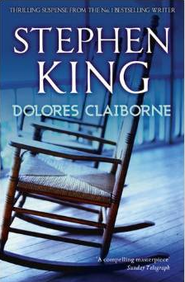 Dolores Claiborne is a 1992 thriller by Stephen King, narrated by Dolores herself. The novel is unusual in that there are no chapters or other section breaks. Instead, the book is a single continuous piece of prose that reads like a monologue. It sounds strange, but it works. Here's a summary of the plot.
Dolores Claiborne is a 1992 thriller by Stephen King, narrated by Dolores herself. The novel is unusual in that there are no chapters or other section breaks. Instead, the book is a single continuous piece of prose that reads like a monologue. It sounds strange, but it works. Here's a summary of the plot.
Dolores Claiborne is being interrogated by the police, under suspicion of murdering her wealthy employer, an elderly woman named Vera Donovan whom she has looked after for years. The two women had a difficult yet close relationship. Dolores is adamant that she is innocent; however, she does confess to killing her husband, Joe St. George, almost thirty years before, after finding out that he sexually molested their fourteen-year-old daughter. Dolores's confession develops into the story of her life, her troubled marriage, and her relationship with her employer. Along the way we also get glimpses into the personal lives of the police officers interrogating her, disclosed through Dolores's commentary, which demonstrates an astute grasp of human nature.
2. 'The French Lieutenant's Woman' - John Fowles
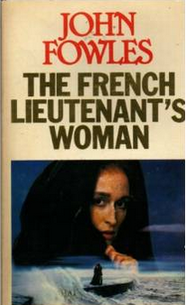 'The French Lieutenant's Woman', written by John Fowles in 1969, is a historical fiction novel. It's unusual in that the narrator intervenes throughout the novel and later becomes a character in it. Furthermore, he offers three different ways for the narrative to end. (No plot spoilers, I promise!) After the first ending, the narrator appears as a character sharing a railway compartment with the male protagonist. He tosses a coin to determine the order in which he will portray the other two possible endings, emphasising their equal plausibility. Here's a summary of the plot.
'The French Lieutenant's Woman', written by John Fowles in 1969, is a historical fiction novel. It's unusual in that the narrator intervenes throughout the novel and later becomes a character in it. Furthermore, he offers three different ways for the narrative to end. (No plot spoilers, I promise!) After the first ending, the narrator appears as a character sharing a railway compartment with the male protagonist. He tosses a coin to determine the order in which he will portray the other two possible endings, emphasising their equal plausibility. Here's a summary of the plot.
Sarah Woodruff, the 'Woman' of the title, also known as 'Tragedy', lives in Lyme Regis as a disgraced woman, supposedly abandoned by a French ship's officer named Varguennes who has returned to France and married. She spends a lot of time on The Cobb, a stone jetty where she stares out at the sea, thus increasing her mysterious reputation.
One day, Charles Smithson and Ernestina Freeman, his fiancée, see Sarah walking along the cliffside. Ernestina tells Charles something of Sarah's story, and he becomes curious about her. He has several more encounters with Sarah, and ends up falling in love with her. Returning from a journey to Ernestina's father, Charles has the choice of either returning to Ernestina or visiting Sarah. It's at this point that the first possible ending kicks in, triggering the appearance of the narrator in Charles's railway carriage and the other endings. Intriguing! 3. 'Slaughterhouse Five' - Kurt Vonnegut
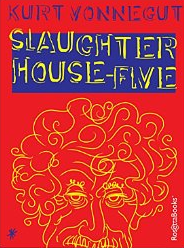 The novel boasting the unwieldy title of 'Slaughterhouse-Five, or The Children's Crusade: A Duty-Dance with Death' was written in 1969 by Kurt Vonnegut. It's a satirical novel that's partly autobiographical, being based on Vonnegut's World War Two experiences, particularly the fire-bombing of Dresden. Its structure is unusual in that the story is told in a non-linear order and events become clear through various flashbacks (or time travel experiences) involving the narrator. He describes the stories of Billy Pilgrim, who believes himself to have been in an alien zoo and to experience time travel. Here's a summary of the plot.
The novel boasting the unwieldy title of 'Slaughterhouse-Five, or The Children's Crusade: A Duty-Dance with Death' was written in 1969 by Kurt Vonnegut. It's a satirical novel that's partly autobiographical, being based on Vonnegut's World War Two experiences, particularly the fire-bombing of Dresden. Its structure is unusual in that the story is told in a non-linear order and events become clear through various flashbacks (or time travel experiences) involving the narrator. He describes the stories of Billy Pilgrim, who believes himself to have been in an alien zoo and to experience time travel. Here's a summary of the plot.
Billy Pilgrim is a disoriented, fatalistic, and ill-trained American soldier who refuses to fight in the Second World War. He is captured by the Germans and transported to Dresden where he and his fellow prisoners are housed in a disused slaughterhouse in Dresden. Their building is known as "Schlachthof-fünf" ("Slaughterhouse Five"). During the fire-bombing, the prisoners of war and their German guards hide in a cellar, causing them to be among the few survivors.
After the war ends, Billy suffers post-traumatic stress disorder and is put into psychiatric care. Once released, he marries a woman called Valencia Merble, and they have two children: a son, Robert, and a daughter named Barbara. Years later, on Barbara's wedding night, Billy is captured by an alien space ship and taken to a far-off planet, where he meets a porn star. She and Billy fall in love and have a child together. He is then sent back to Earth to relive past or future moments of his life.
In 1968, Billy and a co-pilot are the only survivors of a plane crash. Whilst recovering, he shares a hospital room with a Harvard history professor. Billy talks about the bombing of Dresden, with the professor claiming it was justified. After Barbara takes him home, he sneaks out and drives to New York City. That evening he wanders around Times Square, visiting a bookstore featuring pornography, which brings back memories of his former love. Later, he guests on a radio show where he talks about his time-travels, culminating in being kicked out of the studio. He returns to his hotel room, falls asleep and time-travels back to 1945 Dresden, where the book ends.
4. 'Pale Fire' - Vladimir Nabokov
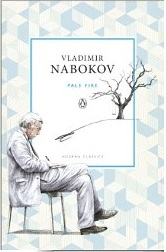 This novel, written in 1962, is unusual in that it's presented as a 999-line poem entitled "Pale Fire" by the fictional John Shade, with a foreword and lengthy commentary by an academic colleague of the poet, Charles Kinbote. Together these elements form a narrative in which both authors are central characters. The reader can chose to read 'Pale Fire' in the normal linear fashion, or by jumping between Kinbote's notes and Shade's poem.
This novel, written in 1962, is unusual in that it's presented as a 999-line poem entitled "Pale Fire" by the fictional John Shade, with a foreword and lengthy commentary by an academic colleague of the poet, Charles Kinbote. Together these elements form a narrative in which both authors are central characters. The reader can chose to read 'Pale Fire' in the normal linear fashion, or by jumping between Kinbote's notes and Shade's poem.
The interaction between Kinbote and Shade takes place in the fictitious town of New Wye, Appalachia, where they live close to each other. Kinbote writes his commentary in a tourist cabin in the equally fictitious western town of Cedarn, Utana.
Canto 1 of Shade's poem includes his early encounters with death and what he believes to be the supernatural. Canto 2 centres on his family and the apparent suicide of his daughter, Hazel. Number 3 focuses on Shade's search for knowledge about an afterlife, whilst 4 offers details regarding his daily life and his poetry, through which he attempts to understand the universe.
Kinbote acquires the manuscript, overseeing the poem's publication, telling readers that it lacks only line 1,000. In his role as co-narrator, he tells three stories, one being his own, especially his friendship with Shade. Kinbote's second story deals with King Charles II, "The Beloved," the deposed king of Zembla, claiming he inspired Shade to write the poem by recounting King Charles's escape to him. The final story is that of Gradus, an assassin dispatched by the new rulers of Zembla to kill the exiled King Charles. In the last note Kinbote makes, to the missing line 1000, he tells how Gradus killed Shade by mistake.
Isn't that all weird and wonderful?
5. 'The Unfortunates' - B. S. Johnson
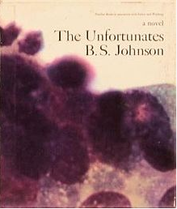 B.S. Johnson's 1969 experimental novel 'The Unfortunates' consists of 27 unbound chapters in a box. The first and last chapters are specified but the other 25 can be read in any order. These range in length from a single paragraph to twelve pages, The author explained this unusual structure by saying it was a better way of conveying the mind’s randomness than the imposed order of a bound book. Here's a summary of the plot.
B.S. Johnson's 1969 experimental novel 'The Unfortunates' consists of 27 unbound chapters in a box. The first and last chapters are specified but the other 25 can be read in any order. These range in length from a single paragraph to twelve pages, The author explained this unusual structure by saying it was a better way of conveying the mind’s randomness than the imposed order of a bound book. Here's a summary of the plot.
A sports writer is sent to Nottingham on an assignment, only to find himself confronted by ghosts from his past. As he attempts to report an association football match, memories of his friend, a tragic victim of cancer, haunt his mind.
Let's hear from you!
As I mentioned above, this post is only the tip of the iceberg when it comes to unusually structured novels. What ones have you read that go beyond the norm in terms of structure? Perhaps you're a novelist yourself who's written a book that's a bit different. Leave me a comment and let me know!
Subscribe to my newsletter and blog!
 I'd love to stay in contact with you! Why not sign up for my newsletter? It's an occasional communication to keep you informed about my new novel releases. I respect your privacy and will never sell your details to any third parties. To sign up, enter your details in the form at the top of the sidebar.
I'd love to stay in contact with you! Why not sign up for my newsletter? It's an occasional communication to keep you informed about my new novel releases. I respect your privacy and will never sell your details to any third parties. To sign up, enter your details in the form at the top of the sidebar.
And if you've enjoyed this blog post, how about subscribing via RSS feed or email? Either click the links in my blog sidebar or sign up via Networked Blogs, also in the sidebar. It'll be great to have you on board!
For my latest novel, 'The Second Captive', I adopted a two-part structure, together with a prologue and epilogue. Not particularly unusual, but it got me thinking. Just how weird and wacky can a novelist get with the way he/she constructs a novel? And are there any examples I could share with my blog readers? It turns out there are plenty. Here are five examples of novels that take a different approach to the classic chapter by chapter structure.
1. 'Dolores Claiborne' - Stephen King
 Dolores Claiborne is a 1992 thriller by Stephen King, narrated by Dolores herself. The novel is unusual in that there are no chapters or other section breaks. Instead, the book is a single continuous piece of prose that reads like a monologue. It sounds strange, but it works. Here's a summary of the plot.
Dolores Claiborne is a 1992 thriller by Stephen King, narrated by Dolores herself. The novel is unusual in that there are no chapters or other section breaks. Instead, the book is a single continuous piece of prose that reads like a monologue. It sounds strange, but it works. Here's a summary of the plot.Dolores Claiborne is being interrogated by the police, under suspicion of murdering her wealthy employer, an elderly woman named Vera Donovan whom she has looked after for years. The two women had a difficult yet close relationship. Dolores is adamant that she is innocent; however, she does confess to killing her husband, Joe St. George, almost thirty years before, after finding out that he sexually molested their fourteen-year-old daughter. Dolores's confession develops into the story of her life, her troubled marriage, and her relationship with her employer. Along the way we also get glimpses into the personal lives of the police officers interrogating her, disclosed through Dolores's commentary, which demonstrates an astute grasp of human nature.
2. 'The French Lieutenant's Woman' - John Fowles
 'The French Lieutenant's Woman', written by John Fowles in 1969, is a historical fiction novel. It's unusual in that the narrator intervenes throughout the novel and later becomes a character in it. Furthermore, he offers three different ways for the narrative to end. (No plot spoilers, I promise!) After the first ending, the narrator appears as a character sharing a railway compartment with the male protagonist. He tosses a coin to determine the order in which he will portray the other two possible endings, emphasising their equal plausibility. Here's a summary of the plot.
'The French Lieutenant's Woman', written by John Fowles in 1969, is a historical fiction novel. It's unusual in that the narrator intervenes throughout the novel and later becomes a character in it. Furthermore, he offers three different ways for the narrative to end. (No plot spoilers, I promise!) After the first ending, the narrator appears as a character sharing a railway compartment with the male protagonist. He tosses a coin to determine the order in which he will portray the other two possible endings, emphasising their equal plausibility. Here's a summary of the plot.Sarah Woodruff, the 'Woman' of the title, also known as 'Tragedy', lives in Lyme Regis as a disgraced woman, supposedly abandoned by a French ship's officer named Varguennes who has returned to France and married. She spends a lot of time on The Cobb, a stone jetty where she stares out at the sea, thus increasing her mysterious reputation.
One day, Charles Smithson and Ernestina Freeman, his fiancée, see Sarah walking along the cliffside. Ernestina tells Charles something of Sarah's story, and he becomes curious about her. He has several more encounters with Sarah, and ends up falling in love with her. Returning from a journey to Ernestina's father, Charles has the choice of either returning to Ernestina or visiting Sarah. It's at this point that the first possible ending kicks in, triggering the appearance of the narrator in Charles's railway carriage and the other endings. Intriguing! 3. 'Slaughterhouse Five' - Kurt Vonnegut
 The novel boasting the unwieldy title of 'Slaughterhouse-Five, or The Children's Crusade: A Duty-Dance with Death' was written in 1969 by Kurt Vonnegut. It's a satirical novel that's partly autobiographical, being based on Vonnegut's World War Two experiences, particularly the fire-bombing of Dresden. Its structure is unusual in that the story is told in a non-linear order and events become clear through various flashbacks (or time travel experiences) involving the narrator. He describes the stories of Billy Pilgrim, who believes himself to have been in an alien zoo and to experience time travel. Here's a summary of the plot.
The novel boasting the unwieldy title of 'Slaughterhouse-Five, or The Children's Crusade: A Duty-Dance with Death' was written in 1969 by Kurt Vonnegut. It's a satirical novel that's partly autobiographical, being based on Vonnegut's World War Two experiences, particularly the fire-bombing of Dresden. Its structure is unusual in that the story is told in a non-linear order and events become clear through various flashbacks (or time travel experiences) involving the narrator. He describes the stories of Billy Pilgrim, who believes himself to have been in an alien zoo and to experience time travel. Here's a summary of the plot.Billy Pilgrim is a disoriented, fatalistic, and ill-trained American soldier who refuses to fight in the Second World War. He is captured by the Germans and transported to Dresden where he and his fellow prisoners are housed in a disused slaughterhouse in Dresden. Their building is known as "Schlachthof-fünf" ("Slaughterhouse Five"). During the fire-bombing, the prisoners of war and their German guards hide in a cellar, causing them to be among the few survivors.
After the war ends, Billy suffers post-traumatic stress disorder and is put into psychiatric care. Once released, he marries a woman called Valencia Merble, and they have two children: a son, Robert, and a daughter named Barbara. Years later, on Barbara's wedding night, Billy is captured by an alien space ship and taken to a far-off planet, where he meets a porn star. She and Billy fall in love and have a child together. He is then sent back to Earth to relive past or future moments of his life.
In 1968, Billy and a co-pilot are the only survivors of a plane crash. Whilst recovering, he shares a hospital room with a Harvard history professor. Billy talks about the bombing of Dresden, with the professor claiming it was justified. After Barbara takes him home, he sneaks out and drives to New York City. That evening he wanders around Times Square, visiting a bookstore featuring pornography, which brings back memories of his former love. Later, he guests on a radio show where he talks about his time-travels, culminating in being kicked out of the studio. He returns to his hotel room, falls asleep and time-travels back to 1945 Dresden, where the book ends.
4. 'Pale Fire' - Vladimir Nabokov
 This novel, written in 1962, is unusual in that it's presented as a 999-line poem entitled "Pale Fire" by the fictional John Shade, with a foreword and lengthy commentary by an academic colleague of the poet, Charles Kinbote. Together these elements form a narrative in which both authors are central characters. The reader can chose to read 'Pale Fire' in the normal linear fashion, or by jumping between Kinbote's notes and Shade's poem.
This novel, written in 1962, is unusual in that it's presented as a 999-line poem entitled "Pale Fire" by the fictional John Shade, with a foreword and lengthy commentary by an academic colleague of the poet, Charles Kinbote. Together these elements form a narrative in which both authors are central characters. The reader can chose to read 'Pale Fire' in the normal linear fashion, or by jumping between Kinbote's notes and Shade's poem.The interaction between Kinbote and Shade takes place in the fictitious town of New Wye, Appalachia, where they live close to each other. Kinbote writes his commentary in a tourist cabin in the equally fictitious western town of Cedarn, Utana.
Canto 1 of Shade's poem includes his early encounters with death and what he believes to be the supernatural. Canto 2 centres on his family and the apparent suicide of his daughter, Hazel. Number 3 focuses on Shade's search for knowledge about an afterlife, whilst 4 offers details regarding his daily life and his poetry, through which he attempts to understand the universe.
Kinbote acquires the manuscript, overseeing the poem's publication, telling readers that it lacks only line 1,000. In his role as co-narrator, he tells three stories, one being his own, especially his friendship with Shade. Kinbote's second story deals with King Charles II, "The Beloved," the deposed king of Zembla, claiming he inspired Shade to write the poem by recounting King Charles's escape to him. The final story is that of Gradus, an assassin dispatched by the new rulers of Zembla to kill the exiled King Charles. In the last note Kinbote makes, to the missing line 1000, he tells how Gradus killed Shade by mistake.
Isn't that all weird and wonderful?
5. 'The Unfortunates' - B. S. Johnson
 B.S. Johnson's 1969 experimental novel 'The Unfortunates' consists of 27 unbound chapters in a box. The first and last chapters are specified but the other 25 can be read in any order. These range in length from a single paragraph to twelve pages, The author explained this unusual structure by saying it was a better way of conveying the mind’s randomness than the imposed order of a bound book. Here's a summary of the plot.
B.S. Johnson's 1969 experimental novel 'The Unfortunates' consists of 27 unbound chapters in a box. The first and last chapters are specified but the other 25 can be read in any order. These range in length from a single paragraph to twelve pages, The author explained this unusual structure by saying it was a better way of conveying the mind’s randomness than the imposed order of a bound book. Here's a summary of the plot.A sports writer is sent to Nottingham on an assignment, only to find himself confronted by ghosts from his past. As he attempts to report an association football match, memories of his friend, a tragic victim of cancer, haunt his mind.
Let's hear from you!
As I mentioned above, this post is only the tip of the iceberg when it comes to unusually structured novels. What ones have you read that go beyond the norm in terms of structure? Perhaps you're a novelist yourself who's written a book that's a bit different. Leave me a comment and let me know!
Subscribe to my newsletter and blog!
 I'd love to stay in contact with you! Why not sign up for my newsletter? It's an occasional communication to keep you informed about my new novel releases. I respect your privacy and will never sell your details to any third parties. To sign up, enter your details in the form at the top of the sidebar.
I'd love to stay in contact with you! Why not sign up for my newsletter? It's an occasional communication to keep you informed about my new novel releases. I respect your privacy and will never sell your details to any third parties. To sign up, enter your details in the form at the top of the sidebar.And if you've enjoyed this blog post, how about subscribing via RSS feed or email? Either click the links in my blog sidebar or sign up via Networked Blogs, also in the sidebar. It'll be great to have you on board!
Published on December 02, 2014 03:30
November 26, 2014
Five Questions for a Fictional Sociopath
By Maggie James
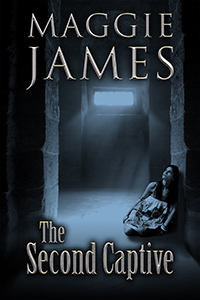 Click the link to buy! This is a proud week for me, as my fourth novel 'The Second Captive' has now been published. For fun, this week's blog post is an interview with the book's antagonist, Dominic Perdue. Who wouldn't want to ask a psychopath what drives them?! (From a safe distance, of course). I'm making the post part of my 'Five' series, so I'll be posing five key questions for my latest bad boy to answer.
Click the link to buy! This is a proud week for me, as my fourth novel 'The Second Captive' has now been published. For fun, this week's blog post is an interview with the book's antagonist, Dominic Perdue. Who wouldn't want to ask a psychopath what drives them?! (From a safe distance, of course). I'm making the post part of my 'Five' series, so I'll be posing five key questions for my latest bad boy to answer.
Before we begin, I'll give some background as to how I created the character. For me, it was essential to give my readers an idea of why Dominic behaves the way he does. The best way to achieve that, I decided, was to write several chapters from Dominic's point of view, as though I'm inside his head. It's always fun trying to think from the perspective of someone so warped! Dominic's a deeply disturbed man, but he's unable to change the way he operates, despite having a great deal of insight into his behaviour. (For those of you who've not read the book, Dominic kidnaps eighteen-year-old Beth Sutton, keeping her in captivity for two years before she escapes).
Why the picture of actor Ian Somerhalder below? It's because when I craft a character, I like to hold an image in my head of what they look like. For me, Ian encapsulates best how I see Dominic Perdue.
Right then, let's sit Mr Perdue on the interview couch and ask him my five questions (whilst avoiding plot spoilers!) Actor Ian Somerhalder
1. How can you justify the kidnapping of Beth Sutton?
Actor Ian Somerhalder
1. How can you justify the kidnapping of Beth Sutton?
Easily, for two reasons. First, Beth represents the chance to put right a past misdeed, something terrible that has always haunted me. Restitution, that's what I call it. So, no matter what you think of me, I mean well. Really.
Second, I'm good for Beth. At twenty-eight, I'm older, wiser, more experienced; I can provide the stability and guidance she needs, and which she's not getting from her home environment. She should be grateful to me. I do so much for her, and ask for little in return.
2. Why Beth? What drew you to her?
Well, I'm reluctant to give plot spoilers, so I'll have to watch what I say! When I first meet her, Beth appeals to me partly because she's so vulnerable. At eighteen, fresh from school, she's naive and easily fooled, making her easy prey. All it takes is wine, a little flattery and charm, and she's hooked. Although our first meeting is not so accidental as Beth believes...
3. Do you honestly believe you can make Beth happy? Given that you kidnapped her?
I do. It might sound weird to you, and to your readers, but remember I'm a deeply damaged individual. For Beth, life with me has many advantages. What I provide for her is secure, good and safe. At eighteen, she's unsure what she wants from life - well, I've removed all reason for confusion. All she has to do is be my companion and keep me happy. In return, I provide her with a stable home, the food she eats, the books she reads. All her material needs are met, without worry, without struggle. Beth doesn't have to think about paying a mortgage, going out to work or raising children; I release her from such mundane concerns. That's why I say she should be grateful to me.
4. How did your mother's death affect you?
I've never recovered from the shock. Is it any wonder I'm such a damaged character, given my upbringing? I was seven years old, remember, when I discovered my mother dead from a brain aneurysm. She'd been my rock, the only good thing in my life, my defence against the monster that was my father. Without her, my world disintegrated into a loveless wilderness. Until I found Beth Sutton, and brought her home to live with me. You don't begrudge me that, do you? Everyone deserves some love in their life.
5. To what extent are you your father's son?
Ah, Lincoln Perdue. Hardly a candidate for 'Father of the Year' award, was he? Small wonder I didn't turn out so well, with him as a parent. He made my life a misery, scarring my soul, driving me to abduct Beth. I'm a better man than my father was, though. I'm very sure of that. For one thing, I'm far more self-aware. Driven by his temper and his prick, Lincoln Perdue lacked the self-control I possess. Well, usually, anyway. I admit that at times, Beth drives me to violence, but the responsibility for that is hers, not mine. Not my fault if she chooses to ignore the rules, is it? And whilst sex might have been my father's motivation, I'm above that sort of thing. I'm glad not to be ruled by my genitals. Sex holds no appeal for me. Another thing for which Beth should be grateful.
So, to answer the question, life with Lincoln Perdue has moulded me into the man I am, but now he's dead I'm free to express myself. If that means I abduct a young woman, so be it. As I've said, I kidnap Beth to set right a past wrong, and to give her a better life. Does that make me a monster? Not in my view. Don't judge a man until you've walked a mile in his shoes, as the saying goes.
Oh, and thanks for creating me.
Thank you, Dominic!
I hope you enjoyed meeting my latest psychopathic character! As an author, somehow it's more fun to create the bad boys and girls of fiction. For me, it's a challenge to present them so that they're not one-dimensional in their flaws, and in a way that my readers understand why they act so badly. If you have any queries about how I crafted Dominic Perdue, or if you'd like to ask the man himself a question, then leave me a comment. I'll do my best to answer on his behalf (avoiding plot spoilers, of course!)
'The Second Captive' has been published!
 Click the image to buy! 'The Second Captive' has now been published! For a limited time only, it's available for the bargain price of £0.99/$0.99, from Amazon in KIndle format. The price will rise on November 30 to £3.29/$4.80, so grab yourself a copy whilst you can! If you enjoy 'The Second Captive', I'd be very grateful if you'd leave a review on Amazon and/or Goodreads. Thank you!
Click the image to buy! 'The Second Captive' has now been published! For a limited time only, it's available for the bargain price of £0.99/$0.99, from Amazon in KIndle format. The price will rise on November 30 to £3.29/$4.80, so grab yourself a copy whilst you can! If you enjoy 'The Second Captive', I'd be very grateful if you'd leave a review on Amazon and/or Goodreads. Thank you!
The paperback version will be published very soon, and will retail at £8.99/$14.60.
I'll update the website and blog when it's ready.
Subscribe to my newsletter and blog!
 I'd love to stay in contact with you! Why not sign up for my newsletter? It's an occasional communication to keep you informed about my new novel releases. I respect your privacy and will never sell your details to any third parties. To sign up, enter your details in the form at the top of the sidebar.
I'd love to stay in contact with you! Why not sign up for my newsletter? It's an occasional communication to keep you informed about my new novel releases. I respect your privacy and will never sell your details to any third parties. To sign up, enter your details in the form at the top of the sidebar.
And if you've enjoyed this blog post, how about subscribing via RSS feed or email? Either click the links in my blog sidebar or sign up via Networked Blogs, also in the sidebar. It'll be great to have you on board!
 Click the link to buy! This is a proud week for me, as my fourth novel 'The Second Captive' has now been published. For fun, this week's blog post is an interview with the book's antagonist, Dominic Perdue. Who wouldn't want to ask a psychopath what drives them?! (From a safe distance, of course). I'm making the post part of my 'Five' series, so I'll be posing five key questions for my latest bad boy to answer.
Click the link to buy! This is a proud week for me, as my fourth novel 'The Second Captive' has now been published. For fun, this week's blog post is an interview with the book's antagonist, Dominic Perdue. Who wouldn't want to ask a psychopath what drives them?! (From a safe distance, of course). I'm making the post part of my 'Five' series, so I'll be posing five key questions for my latest bad boy to answer.Before we begin, I'll give some background as to how I created the character. For me, it was essential to give my readers an idea of why Dominic behaves the way he does. The best way to achieve that, I decided, was to write several chapters from Dominic's point of view, as though I'm inside his head. It's always fun trying to think from the perspective of someone so warped! Dominic's a deeply disturbed man, but he's unable to change the way he operates, despite having a great deal of insight into his behaviour. (For those of you who've not read the book, Dominic kidnaps eighteen-year-old Beth Sutton, keeping her in captivity for two years before she escapes).
Why the picture of actor Ian Somerhalder below? It's because when I craft a character, I like to hold an image in my head of what they look like. For me, Ian encapsulates best how I see Dominic Perdue.
Right then, let's sit Mr Perdue on the interview couch and ask him my five questions (whilst avoiding plot spoilers!)
 Actor Ian Somerhalder
1. How can you justify the kidnapping of Beth Sutton?
Actor Ian Somerhalder
1. How can you justify the kidnapping of Beth Sutton?
Easily, for two reasons. First, Beth represents the chance to put right a past misdeed, something terrible that has always haunted me. Restitution, that's what I call it. So, no matter what you think of me, I mean well. Really.
Second, I'm good for Beth. At twenty-eight, I'm older, wiser, more experienced; I can provide the stability and guidance she needs, and which she's not getting from her home environment. She should be grateful to me. I do so much for her, and ask for little in return.
2. Why Beth? What drew you to her?
Well, I'm reluctant to give plot spoilers, so I'll have to watch what I say! When I first meet her, Beth appeals to me partly because she's so vulnerable. At eighteen, fresh from school, she's naive and easily fooled, making her easy prey. All it takes is wine, a little flattery and charm, and she's hooked. Although our first meeting is not so accidental as Beth believes...
3. Do you honestly believe you can make Beth happy? Given that you kidnapped her?
I do. It might sound weird to you, and to your readers, but remember I'm a deeply damaged individual. For Beth, life with me has many advantages. What I provide for her is secure, good and safe. At eighteen, she's unsure what she wants from life - well, I've removed all reason for confusion. All she has to do is be my companion and keep me happy. In return, I provide her with a stable home, the food she eats, the books she reads. All her material needs are met, without worry, without struggle. Beth doesn't have to think about paying a mortgage, going out to work or raising children; I release her from such mundane concerns. That's why I say she should be grateful to me.
4. How did your mother's death affect you?
I've never recovered from the shock. Is it any wonder I'm such a damaged character, given my upbringing? I was seven years old, remember, when I discovered my mother dead from a brain aneurysm. She'd been my rock, the only good thing in my life, my defence against the monster that was my father. Without her, my world disintegrated into a loveless wilderness. Until I found Beth Sutton, and brought her home to live with me. You don't begrudge me that, do you? Everyone deserves some love in their life.
5. To what extent are you your father's son?
Ah, Lincoln Perdue. Hardly a candidate for 'Father of the Year' award, was he? Small wonder I didn't turn out so well, with him as a parent. He made my life a misery, scarring my soul, driving me to abduct Beth. I'm a better man than my father was, though. I'm very sure of that. For one thing, I'm far more self-aware. Driven by his temper and his prick, Lincoln Perdue lacked the self-control I possess. Well, usually, anyway. I admit that at times, Beth drives me to violence, but the responsibility for that is hers, not mine. Not my fault if she chooses to ignore the rules, is it? And whilst sex might have been my father's motivation, I'm above that sort of thing. I'm glad not to be ruled by my genitals. Sex holds no appeal for me. Another thing for which Beth should be grateful.
So, to answer the question, life with Lincoln Perdue has moulded me into the man I am, but now he's dead I'm free to express myself. If that means I abduct a young woman, so be it. As I've said, I kidnap Beth to set right a past wrong, and to give her a better life. Does that make me a monster? Not in my view. Don't judge a man until you've walked a mile in his shoes, as the saying goes.
Oh, and thanks for creating me.
Thank you, Dominic!
I hope you enjoyed meeting my latest psychopathic character! As an author, somehow it's more fun to create the bad boys and girls of fiction. For me, it's a challenge to present them so that they're not one-dimensional in their flaws, and in a way that my readers understand why they act so badly. If you have any queries about how I crafted Dominic Perdue, or if you'd like to ask the man himself a question, then leave me a comment. I'll do my best to answer on his behalf (avoiding plot spoilers, of course!)
'The Second Captive' has been published!
 Click the image to buy! 'The Second Captive' has now been published! For a limited time only, it's available for the bargain price of £0.99/$0.99, from Amazon in KIndle format. The price will rise on November 30 to £3.29/$4.80, so grab yourself a copy whilst you can! If you enjoy 'The Second Captive', I'd be very grateful if you'd leave a review on Amazon and/or Goodreads. Thank you!
Click the image to buy! 'The Second Captive' has now been published! For a limited time only, it's available for the bargain price of £0.99/$0.99, from Amazon in KIndle format. The price will rise on November 30 to £3.29/$4.80, so grab yourself a copy whilst you can! If you enjoy 'The Second Captive', I'd be very grateful if you'd leave a review on Amazon and/or Goodreads. Thank you!The paperback version will be published very soon, and will retail at £8.99/$14.60.
I'll update the website and blog when it's ready.
Subscribe to my newsletter and blog!
 I'd love to stay in contact with you! Why not sign up for my newsletter? It's an occasional communication to keep you informed about my new novel releases. I respect your privacy and will never sell your details to any third parties. To sign up, enter your details in the form at the top of the sidebar.
I'd love to stay in contact with you! Why not sign up for my newsletter? It's an occasional communication to keep you informed about my new novel releases. I respect your privacy and will never sell your details to any third parties. To sign up, enter your details in the form at the top of the sidebar. And if you've enjoyed this blog post, how about subscribing via RSS feed or email? Either click the links in my blog sidebar or sign up via Networked Blogs, also in the sidebar. It'll be great to have you on board!
Published on November 26, 2014 02:53
November 19, 2014
How I Plot my Novels
By Maggie James
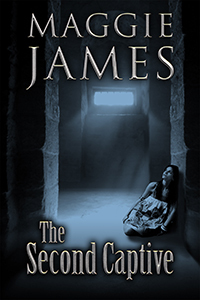 Click the image to buy! I mentioned in last week's post that I'm frequently asked how I create my characters. Another question I often get is to what extent do I plan my novels, and how I plot them. That's what I'll be covering in this week's post, focusing on my fourth novel, The Second Captive.
Click the image to buy! I mentioned in last week's post that I'm frequently asked how I create my characters. Another question I often get is to what extent do I plan my novels, and how I plot them. That's what I'll be covering in this week's post, focusing on my fourth novel, The Second Captive.
So do I plot my novels in advance, or am I what's known as a 'pantser'? (The term refers to authors who write by the seat of their pants, never quite knowing what will come next). Well, I've tried being a pantser, of sorts. My first novel, His Kidnapper's Shoes, was written from a rough plan thrown together in Microsoft Excel, with a tab for each character and a line summarising what I intended to happen in each chapter. Not really 'pantsing' it, but hardly very organised either. My first draft ended up at 146,000 words. To get to the final novel, which is 82,000 words long, I had to chop out a lot of dead wood and characters, and editing was a far more painful process than it needed to be. Had I planned the novel better, I'd have avoided all that extra work. I resolved to mend my ways, and to plot more thoroughly in future! For me, it works well. I like having a solid plan for each novel before I start work, and I believe it helps avoid writer's block. There are no excuses for not writing when you already have a blueprint for what comes next!
The Snowflake Method explained
 In common with many novelists, I use the Snowflake method to plot my books. Pioneered by Randy Ingermanson, it's a ten-step method of arriving at a coherent plot outline, complete with character sketches. Why is it called the Snowflake Method? Let's look at this way of drawing a snowflake. Take a triangle, add new triangles along each side, and it's not long before a snowflake emerges. The principle is the same for plotting a novel. Each step of the Snowflake method builds on the one before, and within ten steps, you end up with a fully-fledged outline for a novel.
In common with many novelists, I use the Snowflake method to plot my books. Pioneered by Randy Ingermanson, it's a ten-step method of arriving at a coherent plot outline, complete with character sketches. Why is it called the Snowflake Method? Let's look at this way of drawing a snowflake. Take a triangle, add new triangles along each side, and it's not long before a snowflake emerges. The principle is the same for plotting a novel. Each step of the Snowflake method builds on the one before, and within ten steps, you end up with a fully-fledged outline for a novel.
The first few stages
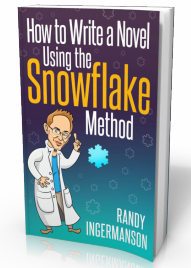 Step 1 is to write a one-sentence summary of the novel. This is a useful exercise in itself, as it concentrates the mind on the essence of what you're trying to convey. For The Second Captive, Step 1 read like this: 'A young woman and her family suffer the effects of Stockholm Syndrome.'
Step 1 is to write a one-sentence summary of the novel. This is a useful exercise in itself, as it concentrates the mind on the essence of what you're trying to convey. For The Second Captive, Step 1 read like this: 'A young woman and her family suffer the effects of Stockholm Syndrome.'
Step 2 involves taking that initial sentence and expanding it into a full paragraph, detailing the story set-up, major events and the ending. Step 3 involves writing a paragraph for each of the characters. This is when I created Beth Sutton, the protagonist of The Second Captive, as well as Dominic Perdue, her antagonist and a dark, disturbed individual. It's always fun creating the bad guys! In Step 4, you take each sentence from Step 2, and expand it into a full paragraph, thus ending up with a one-page summary of the novel. In four steps, we've gone from a sentence to a page. See how the snowflake is growing?
Step 5 takes us back to the characters again, fleshing them out into a one-page summary for each of the major players and half a page for the rest. The result should tell the story from the point of view of each character.
Developing the snowflake
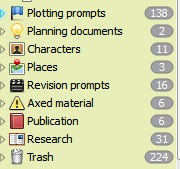 Screen clip from Scrivener Steps 6 - 9 build on the previous ones. The one-page synopsis ends up as a multi-page one, complete with a paragraph for each scene. The characters are also rounded out, as I described in last week's post about creating Beth Sutton for The Second Captive. What the author does is to prepare charts/notes about each character. I like to go into plenty of detail when I do this. Not just the standard stuff, such as height and weight, but what their motivators are, how they will change by the end of the novel, their interactions with other characters, etc. Their mannerisms, their likes and dislikes, their hopes and fears. I also draw a chart mapping their relationships. Anything and everything that will help me understand them better.
Screen clip from Scrivener Steps 6 - 9 build on the previous ones. The one-page synopsis ends up as a multi-page one, complete with a paragraph for each scene. The characters are also rounded out, as I described in last week's post about creating Beth Sutton for The Second Captive. What the author does is to prepare charts/notes about each character. I like to go into plenty of detail when I do this. Not just the standard stuff, such as height and weight, but what their motivators are, how they will change by the end of the novel, their interactions with other characters, etc. Their mannerisms, their likes and dislikes, their hopes and fears. I also draw a chart mapping their relationships. Anything and everything that will help me understand them better.
And Step 10? The most important one of all - write the novel, using the Snowflake outline already created!
Things can, and do, change...
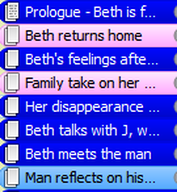 Screen clip from Scrivener Once I have my outline, I create a manuscript file in Scrivener, the writing software I use (more about Scrivener later). I set up a tab for each chapter, with a sub-tab for each scene, and transfer in the notes I've already made using the Snowflake Method. I usually base my novels on being around thirty chapters long - that can, of course, change, but it's a useful starting point. I also set word targets for my chapters, aiming for 3,500 words for each one.
Screen clip from Scrivener Once I have my outline, I create a manuscript file in Scrivener, the writing software I use (more about Scrivener later). I set up a tab for each chapter, with a sub-tab for each scene, and transfer in the notes I've already made using the Snowflake Method. I usually base my novels on being around thirty chapters long - that can, of course, change, but it's a useful starting point. I also set word targets for my chapters, aiming for 3,500 words for each one.
The screen clip illustrates what I did for the prologue and first few chapters of The Second Captive, each one being colour-coded to reflect the character's point of view. This changed dramatically by the time I'd finished, and now bears no resemblance to the picture!
Titles, timelines and mission statements...
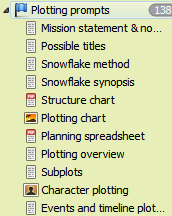 Screen clip from Scrivener What else? Well, I write brief notes about what I want to achieve with each novel. The Second Captive is the first one I've written using scenes, so that formed my mission statement for the book. My previous novels are in whole chapters, so I was keen to play around with using scenes. It was fun! The Second Captive is also different structurally from my other books in that it has a prologue and epilogue, with the main narrative being split into two parts. Each novel teaches me something new.
Screen clip from Scrivener What else? Well, I write brief notes about what I want to achieve with each novel. The Second Captive is the first one I've written using scenes, so that formed my mission statement for the book. My previous novels are in whole chapters, so I was keen to play around with using scenes. It was fun! The Second Captive is also different structurally from my other books in that it has a prologue and epilogue, with the main narrative being split into two parts. Each novel teaches me something new.
At the planning stage, I also make notes of possible titles (I find naming novels very hard!). Subplots get worked on, too, and I map out a schedule of events linked to a timeline. Getting my timeline right is something at which I'm very bad, so maybe that'll form my mission statement for my next novel! A guide, not a ball and chain
Even with a comprehensive outline, I find I need to make changes as I write. The Snowflake Method is a guide, not a ball and chain. It provides a useful framework, but it's hard to see exactly how a plot will work until the writing process starts. Sometimes, an event makes sense at the outline stage, but when I write the relevant scene, it doesn't work so well. I certainly found that with The Secret Captive, needing to make big changes to several chapters. Again, Scrivener is immensely useful here, allowing me to move chunks of text easily, more so than in Word, and I can duplicate documents to play around with new ideas.
A donkey cart and a Ferrari...
 Click the image to find out more! So that's the Snowflake method, and it's what I used to take The Second Captive from a one-line summary to a fully fledged novel, using Scrivener. I praise Scrivener a lot, but I think it's the best writing software on the market, because it's so versatile.
Click the image to find out more! So that's the Snowflake method, and it's what I used to take The Second Captive from a one-line summary to a fully fledged novel, using Scrivener. I praise Scrivener a lot, but I think it's the best writing software on the market, because it's so versatile.
I mentioned above that I wrote His Kidnapper's Shoes using Microsoft Word. Once was enough! I'd never go back to doing things that way. Word is to Scrivener what a donkey cart is to a Ferrari, in my opinion. I do use Word for some stages of the editing process, but as Scrivener evolves I foresee that becoming a thing of the past. I can structure my document files however I choose, making it very flexible. Another great feature is that I can add my research notes, pictures, videos, etc directly into the software, rather than having to flick back and forth to other programmes. In fact, I can split the screen in Scrivener, so I can have my notes in one part and my manuscript in another, making writing much easier. Another way of avoiding writer's block!
When I've finished the editing process, the software compiles my manuscript into Kindle format for me, or any other format I choose. Wonderful! Any comments or questions?
 I hope that this blog post has given you some insight into how a 'plotter' like me plans their novels! Other writers, what's your approach? Are you a planner, a pantser, or somewhere in between? Readers, any questions about the plotting process? Leave me a comment!
I hope that this blog post has given you some insight into how a 'plotter' like me plans their novels! Other writers, what's your approach? Are you a planner, a pantser, or somewhere in between? Readers, any questions about the plotting process? Leave me a comment!
The Second Captive available for pre-order! Only $0.99/£0.99
 I'm delighted to report that my fourth novel, The Second Captive, is now available on Amazon in Kindle format via their pre-order system. Publication date will be November 24, with the paperback version following shortly afterwards. I'm releasing the book at a discounted price of $0.99/£0.99 for the first week only, rising on December 1 to $4.80/£3.29. Grab a copy whilst it's on sale! Here's the link. Subscribe to my newsletter and blog!
I'm delighted to report that my fourth novel, The Second Captive, is now available on Amazon in Kindle format via their pre-order system. Publication date will be November 24, with the paperback version following shortly afterwards. I'm releasing the book at a discounted price of $0.99/£0.99 for the first week only, rising on December 1 to $4.80/£3.29. Grab a copy whilst it's on sale! Here's the link. Subscribe to my newsletter and blog!
 I'd love to stay in contact with you! Why not sign up for my newsletter? It's an occasional communication to keep you informed about my new novel releases. I respect your privacy and will never sell your details to any third parties. To sign up, enter your details in the form at the top of the sidebar.
I'd love to stay in contact with you! Why not sign up for my newsletter? It's an occasional communication to keep you informed about my new novel releases. I respect your privacy and will never sell your details to any third parties. To sign up, enter your details in the form at the top of the sidebar.
And if you've enjoyed this blog post, how about subscribing via RSS feed or email? Either click the links in my blog sidebar or sign up via Networked Blogs, also in the sidebar. It'll be great to have you on board!
 Click the image to buy! I mentioned in last week's post that I'm frequently asked how I create my characters. Another question I often get is to what extent do I plan my novels, and how I plot them. That's what I'll be covering in this week's post, focusing on my fourth novel, The Second Captive.
Click the image to buy! I mentioned in last week's post that I'm frequently asked how I create my characters. Another question I often get is to what extent do I plan my novels, and how I plot them. That's what I'll be covering in this week's post, focusing on my fourth novel, The Second Captive.So do I plot my novels in advance, or am I what's known as a 'pantser'? (The term refers to authors who write by the seat of their pants, never quite knowing what will come next). Well, I've tried being a pantser, of sorts. My first novel, His Kidnapper's Shoes, was written from a rough plan thrown together in Microsoft Excel, with a tab for each character and a line summarising what I intended to happen in each chapter. Not really 'pantsing' it, but hardly very organised either. My first draft ended up at 146,000 words. To get to the final novel, which is 82,000 words long, I had to chop out a lot of dead wood and characters, and editing was a far more painful process than it needed to be. Had I planned the novel better, I'd have avoided all that extra work. I resolved to mend my ways, and to plot more thoroughly in future! For me, it works well. I like having a solid plan for each novel before I start work, and I believe it helps avoid writer's block. There are no excuses for not writing when you already have a blueprint for what comes next!
The Snowflake Method explained
 In common with many novelists, I use the Snowflake method to plot my books. Pioneered by Randy Ingermanson, it's a ten-step method of arriving at a coherent plot outline, complete with character sketches. Why is it called the Snowflake Method? Let's look at this way of drawing a snowflake. Take a triangle, add new triangles along each side, and it's not long before a snowflake emerges. The principle is the same for plotting a novel. Each step of the Snowflake method builds on the one before, and within ten steps, you end up with a fully-fledged outline for a novel.
In common with many novelists, I use the Snowflake method to plot my books. Pioneered by Randy Ingermanson, it's a ten-step method of arriving at a coherent plot outline, complete with character sketches. Why is it called the Snowflake Method? Let's look at this way of drawing a snowflake. Take a triangle, add new triangles along each side, and it's not long before a snowflake emerges. The principle is the same for plotting a novel. Each step of the Snowflake method builds on the one before, and within ten steps, you end up with a fully-fledged outline for a novel.The first few stages
 Step 1 is to write a one-sentence summary of the novel. This is a useful exercise in itself, as it concentrates the mind on the essence of what you're trying to convey. For The Second Captive, Step 1 read like this: 'A young woman and her family suffer the effects of Stockholm Syndrome.'
Step 1 is to write a one-sentence summary of the novel. This is a useful exercise in itself, as it concentrates the mind on the essence of what you're trying to convey. For The Second Captive, Step 1 read like this: 'A young woman and her family suffer the effects of Stockholm Syndrome.'Step 2 involves taking that initial sentence and expanding it into a full paragraph, detailing the story set-up, major events and the ending. Step 3 involves writing a paragraph for each of the characters. This is when I created Beth Sutton, the protagonist of The Second Captive, as well as Dominic Perdue, her antagonist and a dark, disturbed individual. It's always fun creating the bad guys! In Step 4, you take each sentence from Step 2, and expand it into a full paragraph, thus ending up with a one-page summary of the novel. In four steps, we've gone from a sentence to a page. See how the snowflake is growing?
Step 5 takes us back to the characters again, fleshing them out into a one-page summary for each of the major players and half a page for the rest. The result should tell the story from the point of view of each character.
Developing the snowflake
 Screen clip from Scrivener Steps 6 - 9 build on the previous ones. The one-page synopsis ends up as a multi-page one, complete with a paragraph for each scene. The characters are also rounded out, as I described in last week's post about creating Beth Sutton for The Second Captive. What the author does is to prepare charts/notes about each character. I like to go into plenty of detail when I do this. Not just the standard stuff, such as height and weight, but what their motivators are, how they will change by the end of the novel, their interactions with other characters, etc. Their mannerisms, their likes and dislikes, their hopes and fears. I also draw a chart mapping their relationships. Anything and everything that will help me understand them better.
Screen clip from Scrivener Steps 6 - 9 build on the previous ones. The one-page synopsis ends up as a multi-page one, complete with a paragraph for each scene. The characters are also rounded out, as I described in last week's post about creating Beth Sutton for The Second Captive. What the author does is to prepare charts/notes about each character. I like to go into plenty of detail when I do this. Not just the standard stuff, such as height and weight, but what their motivators are, how they will change by the end of the novel, their interactions with other characters, etc. Their mannerisms, their likes and dislikes, their hopes and fears. I also draw a chart mapping their relationships. Anything and everything that will help me understand them better.And Step 10? The most important one of all - write the novel, using the Snowflake outline already created!
Things can, and do, change...
 Screen clip from Scrivener Once I have my outline, I create a manuscript file in Scrivener, the writing software I use (more about Scrivener later). I set up a tab for each chapter, with a sub-tab for each scene, and transfer in the notes I've already made using the Snowflake Method. I usually base my novels on being around thirty chapters long - that can, of course, change, but it's a useful starting point. I also set word targets for my chapters, aiming for 3,500 words for each one.
Screen clip from Scrivener Once I have my outline, I create a manuscript file in Scrivener, the writing software I use (more about Scrivener later). I set up a tab for each chapter, with a sub-tab for each scene, and transfer in the notes I've already made using the Snowflake Method. I usually base my novels on being around thirty chapters long - that can, of course, change, but it's a useful starting point. I also set word targets for my chapters, aiming for 3,500 words for each one.The screen clip illustrates what I did for the prologue and first few chapters of The Second Captive, each one being colour-coded to reflect the character's point of view. This changed dramatically by the time I'd finished, and now bears no resemblance to the picture!
Titles, timelines and mission statements...
 Screen clip from Scrivener What else? Well, I write brief notes about what I want to achieve with each novel. The Second Captive is the first one I've written using scenes, so that formed my mission statement for the book. My previous novels are in whole chapters, so I was keen to play around with using scenes. It was fun! The Second Captive is also different structurally from my other books in that it has a prologue and epilogue, with the main narrative being split into two parts. Each novel teaches me something new.
Screen clip from Scrivener What else? Well, I write brief notes about what I want to achieve with each novel. The Second Captive is the first one I've written using scenes, so that formed my mission statement for the book. My previous novels are in whole chapters, so I was keen to play around with using scenes. It was fun! The Second Captive is also different structurally from my other books in that it has a prologue and epilogue, with the main narrative being split into two parts. Each novel teaches me something new.At the planning stage, I also make notes of possible titles (I find naming novels very hard!). Subplots get worked on, too, and I map out a schedule of events linked to a timeline. Getting my timeline right is something at which I'm very bad, so maybe that'll form my mission statement for my next novel! A guide, not a ball and chain
Even with a comprehensive outline, I find I need to make changes as I write. The Snowflake Method is a guide, not a ball and chain. It provides a useful framework, but it's hard to see exactly how a plot will work until the writing process starts. Sometimes, an event makes sense at the outline stage, but when I write the relevant scene, it doesn't work so well. I certainly found that with The Secret Captive, needing to make big changes to several chapters. Again, Scrivener is immensely useful here, allowing me to move chunks of text easily, more so than in Word, and I can duplicate documents to play around with new ideas.
A donkey cart and a Ferrari...
 Click the image to find out more! So that's the Snowflake method, and it's what I used to take The Second Captive from a one-line summary to a fully fledged novel, using Scrivener. I praise Scrivener a lot, but I think it's the best writing software on the market, because it's so versatile.
Click the image to find out more! So that's the Snowflake method, and it's what I used to take The Second Captive from a one-line summary to a fully fledged novel, using Scrivener. I praise Scrivener a lot, but I think it's the best writing software on the market, because it's so versatile.I mentioned above that I wrote His Kidnapper's Shoes using Microsoft Word. Once was enough! I'd never go back to doing things that way. Word is to Scrivener what a donkey cart is to a Ferrari, in my opinion. I do use Word for some stages of the editing process, but as Scrivener evolves I foresee that becoming a thing of the past. I can structure my document files however I choose, making it very flexible. Another great feature is that I can add my research notes, pictures, videos, etc directly into the software, rather than having to flick back and forth to other programmes. In fact, I can split the screen in Scrivener, so I can have my notes in one part and my manuscript in another, making writing much easier. Another way of avoiding writer's block!
When I've finished the editing process, the software compiles my manuscript into Kindle format for me, or any other format I choose. Wonderful! Any comments or questions?
 I hope that this blog post has given you some insight into how a 'plotter' like me plans their novels! Other writers, what's your approach? Are you a planner, a pantser, or somewhere in between? Readers, any questions about the plotting process? Leave me a comment!
I hope that this blog post has given you some insight into how a 'plotter' like me plans their novels! Other writers, what's your approach? Are you a planner, a pantser, or somewhere in between? Readers, any questions about the plotting process? Leave me a comment!The Second Captive available for pre-order! Only $0.99/£0.99
 I'm delighted to report that my fourth novel, The Second Captive, is now available on Amazon in Kindle format via their pre-order system. Publication date will be November 24, with the paperback version following shortly afterwards. I'm releasing the book at a discounted price of $0.99/£0.99 for the first week only, rising on December 1 to $4.80/£3.29. Grab a copy whilst it's on sale! Here's the link. Subscribe to my newsletter and blog!
I'm delighted to report that my fourth novel, The Second Captive, is now available on Amazon in Kindle format via their pre-order system. Publication date will be November 24, with the paperback version following shortly afterwards. I'm releasing the book at a discounted price of $0.99/£0.99 for the first week only, rising on December 1 to $4.80/£3.29. Grab a copy whilst it's on sale! Here's the link. Subscribe to my newsletter and blog! I'd love to stay in contact with you! Why not sign up for my newsletter? It's an occasional communication to keep you informed about my new novel releases. I respect your privacy and will never sell your details to any third parties. To sign up, enter your details in the form at the top of the sidebar.
I'd love to stay in contact with you! Why not sign up for my newsletter? It's an occasional communication to keep you informed about my new novel releases. I respect your privacy and will never sell your details to any third parties. To sign up, enter your details in the form at the top of the sidebar.And if you've enjoyed this blog post, how about subscribing via RSS feed or email? Either click the links in my blog sidebar or sign up via Networked Blogs, also in the sidebar. It'll be great to have you on board!
Published on November 19, 2014 02:10
November 14, 2014
How I Create my Characters: Beth Sutton
By Maggie James
'How do you create your characters?'
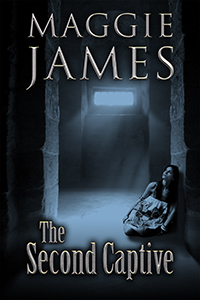 As a novelist, I'm often asked how I come up with my characters, as well as how I develop them. It's a good question. Without credible characters, a book's plot, no matter how good, won't hang together. I spend quite a while mapping out my characters and getting to know them during the planning stage of each novel. I thought my readers might be interested in a glimpse of how I do this. With the publication of my fourth novel imminent, I'll concentrate on its protagonist, Beth Sutton, and describe how she came into being.
As a novelist, I'm often asked how I come up with my characters, as well as how I develop them. It's a good question. Without credible characters, a book's plot, no matter how good, won't hang together. I spend quite a while mapping out my characters and getting to know them during the planning stage of each novel. I thought my readers might be interested in a glimpse of how I do this. With the publication of my fourth novel imminent, I'll concentrate on its protagonist, Beth Sutton, and describe how she came into being.
Firstly, how did the idea for the character of Beth come about? Well, I heard about a young woman who returned home after a five-year absence, refusing to say where she'd been or why she left. Immediately, my curiosity was piqued. What circumstances led to her disappearance? And why wouldn't she talk about what happened? The notion of Stockholm syndrome immediately came to mind. For psychological suspense novelists, it's a condition that provides a wealth of possibilities.
So what is Stockhom syndrome? It's the tendency of a hostage to bond with his or her captor. It may sound unbelievable to those of us fortunate never to have experienced such a situation, but victims can and do empathise with their captors. Notable sufferers have included Patty Hearst, kidnapped by the Symbionese Liberation Army in 1974, but who later joined forces with their cause. I've written more about the condition here. This is what happens to Beth in The Second Captive. Getting the right name for a character
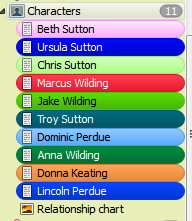 Screen clip from Scrivener Once I had the idea of a young woman who's abducted and falls victim to Stockholm syndrome, the character of Beth Sutton was born. Next, I needed to find a name for her. Unlike my novel titles, I find naming characters fairly easy. Obviously, the moniker I give them has to gel with their age and social background - so Beth, being a young woman, couldn't be called Mabel, Dorothy or Gladys. The name has to fit well in other ways, too. Sophie, for example, has a soft edge to it, conjuring up images of a gentle, kind soul. Therefore it's not a name I'd use for a psychotic killer, for example. Dominique has overtones of control, so I'd pick a name like that for a strong, sassy female character. In fact, the antagonist in the novel, a male character, is called Dominic, and he's definitely someone who likes to be in control. His surname is Perdue, a corruption of the French word for lost; in many ways, he's a lost soul, and foreign languages also feature in the novel.
Screen clip from Scrivener Once I had the idea of a young woman who's abducted and falls victim to Stockholm syndrome, the character of Beth Sutton was born. Next, I needed to find a name for her. Unlike my novel titles, I find naming characters fairly easy. Obviously, the moniker I give them has to gel with their age and social background - so Beth, being a young woman, couldn't be called Mabel, Dorothy or Gladys. The name has to fit well in other ways, too. Sophie, for example, has a soft edge to it, conjuring up images of a gentle, kind soul. Therefore it's not a name I'd use for a psychotic killer, for example. Dominique has overtones of control, so I'd pick a name like that for a strong, sassy female character. In fact, the antagonist in the novel, a male character, is called Dominic, and he's definitely someone who likes to be in control. His surname is Perdue, a corruption of the French word for lost; in many ways, he's a lost soul, and foreign languages also feature in the novel.
To find the right first name, I check possibilities on a baby-naming website, choosing one that feels right when attached to the character in my head. Same with the surname; there are plenty of websites that give the origin of surnames, and I use them to find the right one for my character. Once I have the first and last name, ones that sound good when put together, I go with that.
Next, I set up a tab for him/her in the wonderful software I use, called Scrivener. I employ Scrivener for every part of the writing process; it keeps me organised and compiles my manuscript seamlessly into Kindle format once I'm done. The screen clip above is from The Secret Captive files in Scrivener, showing the section I've used for character creation, along with a chart showing the relationships between them.
What challenges will my character face?
 Actress Emilia Clarke Once I'd set up a tab for Beth Sutton, I used it to work on her character. Scrivener is very flexible, so I can do this any way I chose. What I usually do is to hold the character in my head, whilst answering a series of questions about them, noting the answers in the Scrivener tab.
Actress Emilia Clarke Once I'd set up a tab for Beth Sutton, I used it to work on her character. Scrivener is very flexible, so I can do this any way I chose. What I usually do is to hold the character in my head, whilst answering a series of questions about them, noting the answers in the Scrivener tab.
First come the obvious details, like height, weight, hair colour, etc. Beth Sutton is eighteen years old at the time of her abduction, slim, 5' 8" tall, with long dark hair and matching eyes. Under her right eye, she has a tiny mole. Very like actress Emilia Clarke, pictured left. That's how she appeared in my head, so I went with it; it would be hard to write about her as a 6' blonde when she doesn't appear that way in my mind. As for the mole, I like to give my characters at least one distinguishing feature, helping to make them more real in my readers' minds. For the book's antagonist, Dominic Perdue, I created him with eyes that are mismatched in colour, reflecting the split in his personality between sociopathic kidnapper and lonely, damaged man.
Once I've worked through the physical characteristics, I move on to the mental and emotional ones. Beth, for example, needed to be naive and in search of meaning in her life. Attributes that render her vulnerable to Dominic Perdue's plan to abduct her. The plot wouldn't have worked had I made her a sassy, confident woman. Or prehaps it would have worked, but have gone in an entirely different direction! The need for her to be emotionally immature is also the reason I made her eighteen years of age. She's fresh out of school, still living at home, doesn't know her arse from her elbow. All the more reason Dominic is able to prey on her.
Questions to flesh out my characters
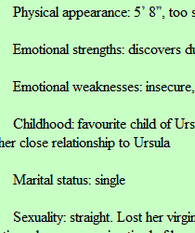 Screen clip from Scrivener The list of questions I work through is long, covering areas such as sexuality, marital status and education. Not all are useful; Beth's political views, for example, are not relevant in any way to the plot of the Second Captive, but I noted them down anyway. It's good to have as comprehensive a knowledge of a character as possible, even if the information is never used. It all helps flesh them into reality when I come to write the novel.
Screen clip from Scrivener The list of questions I work through is long, covering areas such as sexuality, marital status and education. Not all are useful; Beth's political views, for example, are not relevant in any way to the plot of the Second Captive, but I noted them down anyway. It's good to have as comprehensive a knowledge of a character as possible, even if the information is never used. It all helps flesh them into reality when I come to write the novel.
I also ask other, more oblique, questions. What is Beth Sutton most afraid of? What does she want from life? What obstacles will she face during the course of the novel? How will she deal with these issues? For Beth, her challenges are two-fold. First, to survive the horror of being incarcerated for two years in a basement. After she escapes, though, her problems aren't over. Stockholm syndrome bites into her during her abduction, and hard. Once she's free, she finds it's not so easy to shake off her ordeal.
By the time I'd finished, I had a detailed knowledge of Beth Sutton in my head. The clearer the image I hold in my mind of a character, the more comprehensive the knowledge I have of them, the better I can portray him/her. I don't want to have to interrupt my writing by stopping to consider 'how would Beth react in such a situation? What would she say?' I need to know her inside out, down to her bones, so well that I don't need to refer to my notes in Scrivener. Now that Beth's been part of my life for the last nine months, I reckon I've got pretty well acquainted with her!
Any questions? Leave me a comment!
 I hope that you have found this post interesting, and that it's given you an insight into how we novelists create our characters! Well, how I do, anyway - obviously everyone is different. Some authors prefer a more relaxed approach, allowing their characters to develop as the plot progresses, without much prior knowledge of them. I can see the advantages in that, and how it might make the writing process more fun. Me, though, I'm a planner. I work best when I have the plot and characters fully fleshed out before I start to write. Each to their own!
I hope that you have found this post interesting, and that it's given you an insight into how we novelists create our characters! Well, how I do, anyway - obviously everyone is different. Some authors prefer a more relaxed approach, allowing their characters to develop as the plot progresses, without much prior knowledge of them. I can see the advantages in that, and how it might make the writing process more fun. Me, though, I'm a planner. I work best when I have the plot and characters fully fleshed out before I start to write. Each to their own!
Let me know if you have any questions. Next week, I'll be posting about the plotting process. I'll explain how The Second Captive went from a rough idea to a fully-fledged novel.
The Second Captive is now available for pre-order!
 I'm delighted to report that my fourth novel, The Second Captive, is now available on Amazon in Kindle format via their pre-order system. Publication date will be November 24, with the paperback version following shortly afterwards. I'm releasing the book at a discounted price of $0.99/£0.99 for the first week only, rising on December 1 to $4.80/£3.29. Grab a copy whilst it's on sale! Here's the link.
I'm delighted to report that my fourth novel, The Second Captive, is now available on Amazon in Kindle format via their pre-order system. Publication date will be November 24, with the paperback version following shortly afterwards. I'm releasing the book at a discounted price of $0.99/£0.99 for the first week only, rising on December 1 to $4.80/£3.29. Grab a copy whilst it's on sale! Here's the link.
Subscribe to my newsletter and blog!
 I'd love to stay in contact with you! Why not sign up for my newsletter? It's an occasional communication to keep you informed about my new novel releases. I respect your privacy and will never sell your details to any third parties. To sign up, enter your details in the form at the top of the sidebar.
I'd love to stay in contact with you! Why not sign up for my newsletter? It's an occasional communication to keep you informed about my new novel releases. I respect your privacy and will never sell your details to any third parties. To sign up, enter your details in the form at the top of the sidebar.
And if you've enjoyed this blog post, how about subscribing via RSS feed or email? Either click the links in my blog sidebar or sign up via Networked Blogs, also in the sidebar. It'll be great to have you on board!
'How do you create your characters?'
 As a novelist, I'm often asked how I come up with my characters, as well as how I develop them. It's a good question. Without credible characters, a book's plot, no matter how good, won't hang together. I spend quite a while mapping out my characters and getting to know them during the planning stage of each novel. I thought my readers might be interested in a glimpse of how I do this. With the publication of my fourth novel imminent, I'll concentrate on its protagonist, Beth Sutton, and describe how she came into being.
As a novelist, I'm often asked how I come up with my characters, as well as how I develop them. It's a good question. Without credible characters, a book's plot, no matter how good, won't hang together. I spend quite a while mapping out my characters and getting to know them during the planning stage of each novel. I thought my readers might be interested in a glimpse of how I do this. With the publication of my fourth novel imminent, I'll concentrate on its protagonist, Beth Sutton, and describe how she came into being.Firstly, how did the idea for the character of Beth come about? Well, I heard about a young woman who returned home after a five-year absence, refusing to say where she'd been or why she left. Immediately, my curiosity was piqued. What circumstances led to her disappearance? And why wouldn't she talk about what happened? The notion of Stockholm syndrome immediately came to mind. For psychological suspense novelists, it's a condition that provides a wealth of possibilities.
So what is Stockhom syndrome? It's the tendency of a hostage to bond with his or her captor. It may sound unbelievable to those of us fortunate never to have experienced such a situation, but victims can and do empathise with their captors. Notable sufferers have included Patty Hearst, kidnapped by the Symbionese Liberation Army in 1974, but who later joined forces with their cause. I've written more about the condition here. This is what happens to Beth in The Second Captive. Getting the right name for a character
 Screen clip from Scrivener Once I had the idea of a young woman who's abducted and falls victim to Stockholm syndrome, the character of Beth Sutton was born. Next, I needed to find a name for her. Unlike my novel titles, I find naming characters fairly easy. Obviously, the moniker I give them has to gel with their age and social background - so Beth, being a young woman, couldn't be called Mabel, Dorothy or Gladys. The name has to fit well in other ways, too. Sophie, for example, has a soft edge to it, conjuring up images of a gentle, kind soul. Therefore it's not a name I'd use for a psychotic killer, for example. Dominique has overtones of control, so I'd pick a name like that for a strong, sassy female character. In fact, the antagonist in the novel, a male character, is called Dominic, and he's definitely someone who likes to be in control. His surname is Perdue, a corruption of the French word for lost; in many ways, he's a lost soul, and foreign languages also feature in the novel.
Screen clip from Scrivener Once I had the idea of a young woman who's abducted and falls victim to Stockholm syndrome, the character of Beth Sutton was born. Next, I needed to find a name for her. Unlike my novel titles, I find naming characters fairly easy. Obviously, the moniker I give them has to gel with their age and social background - so Beth, being a young woman, couldn't be called Mabel, Dorothy or Gladys. The name has to fit well in other ways, too. Sophie, for example, has a soft edge to it, conjuring up images of a gentle, kind soul. Therefore it's not a name I'd use for a psychotic killer, for example. Dominique has overtones of control, so I'd pick a name like that for a strong, sassy female character. In fact, the antagonist in the novel, a male character, is called Dominic, and he's definitely someone who likes to be in control. His surname is Perdue, a corruption of the French word for lost; in many ways, he's a lost soul, and foreign languages also feature in the novel.To find the right first name, I check possibilities on a baby-naming website, choosing one that feels right when attached to the character in my head. Same with the surname; there are plenty of websites that give the origin of surnames, and I use them to find the right one for my character. Once I have the first and last name, ones that sound good when put together, I go with that.
Next, I set up a tab for him/her in the wonderful software I use, called Scrivener. I employ Scrivener for every part of the writing process; it keeps me organised and compiles my manuscript seamlessly into Kindle format once I'm done. The screen clip above is from The Secret Captive files in Scrivener, showing the section I've used for character creation, along with a chart showing the relationships between them.
What challenges will my character face?
 Actress Emilia Clarke Once I'd set up a tab for Beth Sutton, I used it to work on her character. Scrivener is very flexible, so I can do this any way I chose. What I usually do is to hold the character in my head, whilst answering a series of questions about them, noting the answers in the Scrivener tab.
Actress Emilia Clarke Once I'd set up a tab for Beth Sutton, I used it to work on her character. Scrivener is very flexible, so I can do this any way I chose. What I usually do is to hold the character in my head, whilst answering a series of questions about them, noting the answers in the Scrivener tab.First come the obvious details, like height, weight, hair colour, etc. Beth Sutton is eighteen years old at the time of her abduction, slim, 5' 8" tall, with long dark hair and matching eyes. Under her right eye, she has a tiny mole. Very like actress Emilia Clarke, pictured left. That's how she appeared in my head, so I went with it; it would be hard to write about her as a 6' blonde when she doesn't appear that way in my mind. As for the mole, I like to give my characters at least one distinguishing feature, helping to make them more real in my readers' minds. For the book's antagonist, Dominic Perdue, I created him with eyes that are mismatched in colour, reflecting the split in his personality between sociopathic kidnapper and lonely, damaged man.
Once I've worked through the physical characteristics, I move on to the mental and emotional ones. Beth, for example, needed to be naive and in search of meaning in her life. Attributes that render her vulnerable to Dominic Perdue's plan to abduct her. The plot wouldn't have worked had I made her a sassy, confident woman. Or prehaps it would have worked, but have gone in an entirely different direction! The need for her to be emotionally immature is also the reason I made her eighteen years of age. She's fresh out of school, still living at home, doesn't know her arse from her elbow. All the more reason Dominic is able to prey on her.
Questions to flesh out my characters
 Screen clip from Scrivener The list of questions I work through is long, covering areas such as sexuality, marital status and education. Not all are useful; Beth's political views, for example, are not relevant in any way to the plot of the Second Captive, but I noted them down anyway. It's good to have as comprehensive a knowledge of a character as possible, even if the information is never used. It all helps flesh them into reality when I come to write the novel.
Screen clip from Scrivener The list of questions I work through is long, covering areas such as sexuality, marital status and education. Not all are useful; Beth's political views, for example, are not relevant in any way to the plot of the Second Captive, but I noted them down anyway. It's good to have as comprehensive a knowledge of a character as possible, even if the information is never used. It all helps flesh them into reality when I come to write the novel.I also ask other, more oblique, questions. What is Beth Sutton most afraid of? What does she want from life? What obstacles will she face during the course of the novel? How will she deal with these issues? For Beth, her challenges are two-fold. First, to survive the horror of being incarcerated for two years in a basement. After she escapes, though, her problems aren't over. Stockholm syndrome bites into her during her abduction, and hard. Once she's free, she finds it's not so easy to shake off her ordeal.
By the time I'd finished, I had a detailed knowledge of Beth Sutton in my head. The clearer the image I hold in my mind of a character, the more comprehensive the knowledge I have of them, the better I can portray him/her. I don't want to have to interrupt my writing by stopping to consider 'how would Beth react in such a situation? What would she say?' I need to know her inside out, down to her bones, so well that I don't need to refer to my notes in Scrivener. Now that Beth's been part of my life for the last nine months, I reckon I've got pretty well acquainted with her!
Any questions? Leave me a comment!
 I hope that you have found this post interesting, and that it's given you an insight into how we novelists create our characters! Well, how I do, anyway - obviously everyone is different. Some authors prefer a more relaxed approach, allowing their characters to develop as the plot progresses, without much prior knowledge of them. I can see the advantages in that, and how it might make the writing process more fun. Me, though, I'm a planner. I work best when I have the plot and characters fully fleshed out before I start to write. Each to their own!
I hope that you have found this post interesting, and that it's given you an insight into how we novelists create our characters! Well, how I do, anyway - obviously everyone is different. Some authors prefer a more relaxed approach, allowing their characters to develop as the plot progresses, without much prior knowledge of them. I can see the advantages in that, and how it might make the writing process more fun. Me, though, I'm a planner. I work best when I have the plot and characters fully fleshed out before I start to write. Each to their own!Let me know if you have any questions. Next week, I'll be posting about the plotting process. I'll explain how The Second Captive went from a rough idea to a fully-fledged novel.
The Second Captive is now available for pre-order!
 I'm delighted to report that my fourth novel, The Second Captive, is now available on Amazon in Kindle format via their pre-order system. Publication date will be November 24, with the paperback version following shortly afterwards. I'm releasing the book at a discounted price of $0.99/£0.99 for the first week only, rising on December 1 to $4.80/£3.29. Grab a copy whilst it's on sale! Here's the link.
I'm delighted to report that my fourth novel, The Second Captive, is now available on Amazon in Kindle format via their pre-order system. Publication date will be November 24, with the paperback version following shortly afterwards. I'm releasing the book at a discounted price of $0.99/£0.99 for the first week only, rising on December 1 to $4.80/£3.29. Grab a copy whilst it's on sale! Here's the link.Subscribe to my newsletter and blog!
 I'd love to stay in contact with you! Why not sign up for my newsletter? It's an occasional communication to keep you informed about my new novel releases. I respect your privacy and will never sell your details to any third parties. To sign up, enter your details in the form at the top of the sidebar.
I'd love to stay in contact with you! Why not sign up for my newsletter? It's an occasional communication to keep you informed about my new novel releases. I respect your privacy and will never sell your details to any third parties. To sign up, enter your details in the form at the top of the sidebar.And if you've enjoyed this blog post, how about subscribing via RSS feed or email? Either click the links in my blog sidebar or sign up via Networked Blogs, also in the sidebar. It'll be great to have you on board!
Published on November 14, 2014 06:43
November 6, 2014
Why You Don't Need a Kindle to Read Kindle Books
By Maggie James
A range of free apps for all your devices
 'I'd love to read your ebook,' somebody commented recently to an author friend of mine. 'But I don't have a Kindle.'
'I'd love to read your ebook,' somebody commented recently to an author friend of mine. 'But I don't have a Kindle.'
There's a common misconception that, to read Kindle books, you need a Kindle. Not so! You can enjoy Amazon's huge selection of over two million e-books without buying a Kindle. Let's look first at what Amazon themselves offer as a solution.
Naturally, Amazon want to make it easy for their customers to read Kindle books, and recognise that not everybody will buy a device simply for that purpose. So they provide other options. You can download a range of free Kindle e-reading apps to your computer, tablet and smartphone, as well as use Amazon's Cloud reader.
Available for smartphones, tablets and computers, and it's free!
 In doing so, they've covered virtually all bases, as you'd expect. Their Kindle app is available for every major smartphone, tablet, and computer, meaning you can read Kindle books on any device on which it's installed.
In doing so, they've covered virtually all bases, as you'd expect. Their Kindle app is available for every major smartphone, tablet, and computer, meaning you can read Kindle books on any device on which it's installed.
The app uses Amazon’s Whispersync technology, enabling you to save and synchronise your e-books across all your devices. As you'd expect from Amazon, it's awesomely efficient! And it's free, of course. Here's the link.
What if you already own a Kobo or Nook?
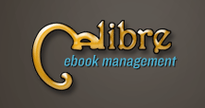 What if you already own an e-reading device, such as a Kobo or Nook? These e-readers only work with ebooks in ePub format, whereas Kindle uses the AZW format. You'll need to convert your Kindle books from AZW into ePub, and there's a simple way to do so, one I've been using for years. Enter calibre (yes, it's spelled with a small 'c'!)
What if you already own an e-reading device, such as a Kobo or Nook? These e-readers only work with ebooks in ePub format, whereas Kindle uses the AZW format. You'll need to convert your Kindle books from AZW into ePub, and there's a simple way to do so, one I've been using for years. Enter calibre (yes, it's spelled with a small 'c'!)
What is calibre? It's free ebook management software, and its uses extend far beyond format conversion. I store all my ebooks in calibre, no matter what the format. Kindle, Word documents, PDFs, ePubs - calibre will collate them all, allowing the user to add notes, tags, edit metadata, and organise them according to choice. It will also transfer books to and from your e-reader.
You can also connect via calibre to a wide range of e-book stores to browse for new purchases, as well as share your ebook library with friends. The software is also an e-reader, meaning you can access your books within calibre itself. I find it immensely useful for storing and collating my e-library, and wouldn't be without it.
It's quick, free and easy to convert ebooks
 So how do you use calibre to convert your Kindle books for your e-reader? Here's how.
So how do you use calibre to convert your Kindle books for your e-reader? Here's how.
1. Download and install thefree calibre software. It's available for Windows, OS X and Linux, as well as in a portable version.
2. Open the software. In the top left-hand corner, you'll see the 'add books' icon. Click on it to navigate to the Kindle book you'd like to include. For PC users, they usually download to C:\Users\Name\My Documents\My Kindle Content.
3. Once you've added the book, highlight it. Click the 'convert books' icon on the toolbar, the third one from the left. A new screen will appear.
4. The book's existing format, AZW, will show as 'input format' in the top left-hand corner, via a drop-down menu. In the top right-hand corner is another menu for the output format. There are several different ones available, but for Nook and Kobo, you'll want to select ePub.
5. Click the 'OK' button, and in the bottom right-hand corner, you'll see calibre's progress in converting the book. It usually takes a second or two to complete.
6. Once the book is in ePub format, attach your e-reader to your computer. Highlight the book again and click on 'send to device'. (This icon will only appear once your device is connected). If you forget to convert a book before attempting to add it to your e-reader, calibre will prompt you to do so anyway.
7. Remember to eject your e-reader once you're done, via the 'device' button.
What about digital rights management?
 What if the Kindle book you buy has DRM installed, however? DRM stands for Digital Rights Management, and some authors add this to their Kindle books as a way of preventing piracy. Books with DRM can't be converted or used on any device other than with Kindle. As a writer myself, I don't use DRM, for two reasons. One is that readers want to access their books as and when they choose, on any device. DRM annoys a lot of people when they find it's in the books they've bought. The second is that DRM as a means to prevent piracy is useless. It's quick, easy and free to strip it from a book, with no technical knowledge required. Whether it's legal to do so depends on the country where you live. It's a grey area, and I'm not suggesting anyone should break the law. In practice, though, if you're converting books for your own use with no intention of piracy, nobody will ever know.
What if the Kindle book you buy has DRM installed, however? DRM stands for Digital Rights Management, and some authors add this to their Kindle books as a way of preventing piracy. Books with DRM can't be converted or used on any device other than with Kindle. As a writer myself, I don't use DRM, for two reasons. One is that readers want to access their books as and when they choose, on any device. DRM annoys a lot of people when they find it's in the books they've bought. The second is that DRM as a means to prevent piracy is useless. It's quick, easy and free to strip it from a book, with no technical knowledge required. Whether it's legal to do so depends on the country where you live. It's a grey area, and I'm not suggesting anyone should break the law. In practice, though, if you're converting books for your own use with no intention of piracy, nobody will ever know.
What you'll need is third party software to add as a plug-in to calibre. This works by stripping out the DRM as you add the book. Due to the legal complexities, I can't and won't advocate removing DRM from books, but if you choose to go ahead, the plug-in is available here. Simply follow the instructions to download and instal into calibre.
Let's spread the word!
I'm keen for as many people as possible to know a Kindle's not necessary to read Kindle books. If you've found this post useful, I'd be grateful if you'd share it, via the buttons below. Thanks for reading! Other related posts:
Digital or physical books - which do you prefer? Read it here.
E-reader or tablet for digital books? Read it here. Subscribe to my newsletter and blog!
 I'd love to stay in contact with you! Why not sign up for my newsletter? It's an occasional communication to keep you informed about my new novel releases. I respect your privacy and will never sell your details to any third parties. To sign up, enter your details in the form at the top of the sidebar.
I'd love to stay in contact with you! Why not sign up for my newsletter? It's an occasional communication to keep you informed about my new novel releases. I respect your privacy and will never sell your details to any third parties. To sign up, enter your details in the form at the top of the sidebar.
And if you've enjoyed this blog post, how about subscribing via RSS feed or email? Either click the links in my blog sidebar or sign up via Networked Blogs, also in the sidebar. It'll be great to have you on board!
A range of free apps for all your devices
 'I'd love to read your ebook,' somebody commented recently to an author friend of mine. 'But I don't have a Kindle.'
'I'd love to read your ebook,' somebody commented recently to an author friend of mine. 'But I don't have a Kindle.'There's a common misconception that, to read Kindle books, you need a Kindle. Not so! You can enjoy Amazon's huge selection of over two million e-books without buying a Kindle. Let's look first at what Amazon themselves offer as a solution.
Naturally, Amazon want to make it easy for their customers to read Kindle books, and recognise that not everybody will buy a device simply for that purpose. So they provide other options. You can download a range of free Kindle e-reading apps to your computer, tablet and smartphone, as well as use Amazon's Cloud reader.
Available for smartphones, tablets and computers, and it's free!
 In doing so, they've covered virtually all bases, as you'd expect. Their Kindle app is available for every major smartphone, tablet, and computer, meaning you can read Kindle books on any device on which it's installed.
In doing so, they've covered virtually all bases, as you'd expect. Their Kindle app is available for every major smartphone, tablet, and computer, meaning you can read Kindle books on any device on which it's installed.The app uses Amazon’s Whispersync technology, enabling you to save and synchronise your e-books across all your devices. As you'd expect from Amazon, it's awesomely efficient! And it's free, of course. Here's the link.
What if you already own a Kobo or Nook?
 What if you already own an e-reading device, such as a Kobo or Nook? These e-readers only work with ebooks in ePub format, whereas Kindle uses the AZW format. You'll need to convert your Kindle books from AZW into ePub, and there's a simple way to do so, one I've been using for years. Enter calibre (yes, it's spelled with a small 'c'!)
What if you already own an e-reading device, such as a Kobo or Nook? These e-readers only work with ebooks in ePub format, whereas Kindle uses the AZW format. You'll need to convert your Kindle books from AZW into ePub, and there's a simple way to do so, one I've been using for years. Enter calibre (yes, it's spelled with a small 'c'!)What is calibre? It's free ebook management software, and its uses extend far beyond format conversion. I store all my ebooks in calibre, no matter what the format. Kindle, Word documents, PDFs, ePubs - calibre will collate them all, allowing the user to add notes, tags, edit metadata, and organise them according to choice. It will also transfer books to and from your e-reader.
You can also connect via calibre to a wide range of e-book stores to browse for new purchases, as well as share your ebook library with friends. The software is also an e-reader, meaning you can access your books within calibre itself. I find it immensely useful for storing and collating my e-library, and wouldn't be without it.
It's quick, free and easy to convert ebooks
 So how do you use calibre to convert your Kindle books for your e-reader? Here's how.
So how do you use calibre to convert your Kindle books for your e-reader? Here's how.1. Download and install thefree calibre software. It's available for Windows, OS X and Linux, as well as in a portable version.
2. Open the software. In the top left-hand corner, you'll see the 'add books' icon. Click on it to navigate to the Kindle book you'd like to include. For PC users, they usually download to C:\Users\Name\My Documents\My Kindle Content.
3. Once you've added the book, highlight it. Click the 'convert books' icon on the toolbar, the third one from the left. A new screen will appear.
4. The book's existing format, AZW, will show as 'input format' in the top left-hand corner, via a drop-down menu. In the top right-hand corner is another menu for the output format. There are several different ones available, but for Nook and Kobo, you'll want to select ePub.
5. Click the 'OK' button, and in the bottom right-hand corner, you'll see calibre's progress in converting the book. It usually takes a second or two to complete.
6. Once the book is in ePub format, attach your e-reader to your computer. Highlight the book again and click on 'send to device'. (This icon will only appear once your device is connected). If you forget to convert a book before attempting to add it to your e-reader, calibre will prompt you to do so anyway.
7. Remember to eject your e-reader once you're done, via the 'device' button.
What about digital rights management?
 What if the Kindle book you buy has DRM installed, however? DRM stands for Digital Rights Management, and some authors add this to their Kindle books as a way of preventing piracy. Books with DRM can't be converted or used on any device other than with Kindle. As a writer myself, I don't use DRM, for two reasons. One is that readers want to access their books as and when they choose, on any device. DRM annoys a lot of people when they find it's in the books they've bought. The second is that DRM as a means to prevent piracy is useless. It's quick, easy and free to strip it from a book, with no technical knowledge required. Whether it's legal to do so depends on the country where you live. It's a grey area, and I'm not suggesting anyone should break the law. In practice, though, if you're converting books for your own use with no intention of piracy, nobody will ever know.
What if the Kindle book you buy has DRM installed, however? DRM stands for Digital Rights Management, and some authors add this to their Kindle books as a way of preventing piracy. Books with DRM can't be converted or used on any device other than with Kindle. As a writer myself, I don't use DRM, for two reasons. One is that readers want to access their books as and when they choose, on any device. DRM annoys a lot of people when they find it's in the books they've bought. The second is that DRM as a means to prevent piracy is useless. It's quick, easy and free to strip it from a book, with no technical knowledge required. Whether it's legal to do so depends on the country where you live. It's a grey area, and I'm not suggesting anyone should break the law. In practice, though, if you're converting books for your own use with no intention of piracy, nobody will ever know.What you'll need is third party software to add as a plug-in to calibre. This works by stripping out the DRM as you add the book. Due to the legal complexities, I can't and won't advocate removing DRM from books, but if you choose to go ahead, the plug-in is available here. Simply follow the instructions to download and instal into calibre.
Let's spread the word!
I'm keen for as many people as possible to know a Kindle's not necessary to read Kindle books. If you've found this post useful, I'd be grateful if you'd share it, via the buttons below. Thanks for reading! Other related posts:
Digital or physical books - which do you prefer? Read it here.
E-reader or tablet for digital books? Read it here. Subscribe to my newsletter and blog!
 I'd love to stay in contact with you! Why not sign up for my newsletter? It's an occasional communication to keep you informed about my new novel releases. I respect your privacy and will never sell your details to any third parties. To sign up, enter your details in the form at the top of the sidebar.
I'd love to stay in contact with you! Why not sign up for my newsletter? It's an occasional communication to keep you informed about my new novel releases. I respect your privacy and will never sell your details to any third parties. To sign up, enter your details in the form at the top of the sidebar.And if you've enjoyed this blog post, how about subscribing via RSS feed or email? Either click the links in my blog sidebar or sign up via Networked Blogs, also in the sidebar. It'll be great to have you on board!
Published on November 06, 2014 07:10
October 31, 2014
Haunted Hotels! Hallowe'en Special
Guest post by Ashley Ladd
I'm delighted to welcome novelist Ashley Ladd to my blog as a guest poster. As a special post for Hallowe'en and in keeping with her latest paranormal novel 'Spooky Sojourn', Ashley has written a post about haunted hotels and novels that feature them.
A ghost tour through a haunted hotel
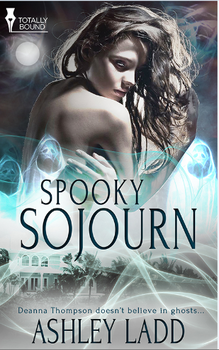 'Spooky Sojourn' by Ashley Ladd My October release, 'Spooky Sojourn’, is about a (surprise, surprise) haunted hotel. It was inspired by my stay several years ago at the French Lick Springs Resort in French Lick, Indiana. I was there for a romance convention. Supposedly Al Capone and his cronies hung out there in the thirties and forties when things got too hot in Chicago. Surprisingly, legend has it that it is the hotel’s former owner, Thomas Taggart, who is the ghost haunting the famous hotel, not the gangsters.
'Spooky Sojourn' by Ashley Ladd My October release, 'Spooky Sojourn’, is about a (surprise, surprise) haunted hotel. It was inspired by my stay several years ago at the French Lick Springs Resort in French Lick, Indiana. I was there for a romance convention. Supposedly Al Capone and his cronies hung out there in the thirties and forties when things got too hot in Chicago. Surprisingly, legend has it that it is the hotel’s former owner, Thomas Taggart, who is the ghost haunting the famous hotel, not the gangsters.
Since we were a group of romance writers and things like that fascinate us, we were cool for the most part with staying at a haunted hotel. In fact, we even begged the hotel staff to take us on a ghost tour. We’d heard about the haunted red elevator that went to the thirteenth floor where Thomas was purported to ride his ghostly horse through the halls. We searched everywhere for the red elevator but didn’t we couldn’t find it.
Finally, one of the hotel employees took us on a ghost tour on a dark and spooky evening. We started in the basement where, low and behold, we found the red elevator. Wouldn’t you know it, that was the same elevator shaft that was across from my room and I was staying alone. I was pretty freaked out.
So we followed the hotel employee around like little ducks in a row, holding hands, holding our breath, hoping Jack Nicholson with his beady eyes and evil grin didn’t pop out at us when one of the writers grabbed someone and yelled “boo!” We all started yelling, jumping, and clutching our throats.
Riding a spirit horse on dark, stormy nights
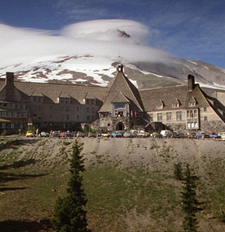 The Overlook Hotel, from 'The Shining' Popular rumor has it that Thomas Taggart’s ghost rides his spirit horse on the cordoned off thirteenth floor on dark, stormy nights. That part of the floor is locked off, thus we weren’t permitted entry. Still, we were scared just standing on the other side of the door to the famous haunted hallway. If we could have toured the illicit wing, we would have in a heartbeat.
The Overlook Hotel, from 'The Shining' Popular rumor has it that Thomas Taggart’s ghost rides his spirit horse on the cordoned off thirteenth floor on dark, stormy nights. That part of the floor is locked off, thus we weren’t permitted entry. Still, we were scared just standing on the other side of the door to the famous haunted hallway. If we could have toured the illicit wing, we would have in a heartbeat.
Ever since, I promised myself I would write a story about a haunted hotel. I really thought I’d do so shortly after that convention. No, it took about twelve years for ‘Spooky Sojourn’ to be born. What a long labor! But it was worthwhile and I hope you’ll think so too.
‘Spooky Sojourn’ isn’t the only story featuring haunted hotels and houses.
Everybody’s heard of ‘The Shining’ by Stephen King, starring Jack Nicholson. Does “redrum” in dripping blood ring any bells? If somehow this book and movie have escaped your notice, see it in October around Halloween. You’ll be guaranteed to be frightened out of your wits.
Another famous book and movie about a haunted house if not exactly in a hotel, is ‘The Amityville Horror’ by Jay Anson. Who hasn’t heard of it? It only has 55,000 reviews on Goodreads.
I Googled for a list of the best haunted hotel books and I found this list on Goodreads.
There are others that come recommended as well. Here are a couple:
'The Haunted' by Niki Valentine
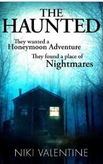 Arriving in the Scottish highlands, Martin and Sue decide to escape their luxury hotel, heading out for a night of back-to-basics living in an abandoned shack. When a storm strikes, they find themselves stranded in the simple hut, miles from anywhere and completely isolated. As gentle bickering leads to violent arguments, Sue starts to sense they are not truly alone - especially when a deep, dark presence seems to takes hold of the pair. With no way to escape, Sue and Martin must try to hold on to their sanity as the shelter quickly becomes a prison - and their thoughts begin to turn murderous...
Arriving in the Scottish highlands, Martin and Sue decide to escape their luxury hotel, heading out for a night of back-to-basics living in an abandoned shack. When a storm strikes, they find themselves stranded in the simple hut, miles from anywhere and completely isolated. As gentle bickering leads to violent arguments, Sue starts to sense they are not truly alone - especially when a deep, dark presence seems to takes hold of the pair. With no way to escape, Sue and Martin must try to hold on to their sanity as the shelter quickly becomes a prison - and their thoughts begin to turn murderous...
'The Haunted Hotel' by Wilkie Collins
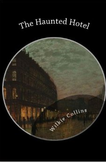
Is there no explanation of the mystery of The Haunted Hotel? Is The Haunted Hotel the tale of a haunting -- or the tale of a crime? The ghost of Lord Montbarry haunts the Palace Hotel in Venice --- or does it? Montbarry's beautiful-yet-terrifying wife, the Countess Narona, and her erstwhile brother are the center of the terror that fills the Palace Hotel. Are their malefactions at the root of the haunting -- or is there something darker, something much more unknowable at work?
Get into the spirit of the season
During this season of Halloween and ghosts and other things that go bump in the night, I’m going to check out these books. What better way to get into the spirit of the season than to immerse yourself in a good haunted hotel/house story, except perhaps, to write one, like I did?
More about my novel Spooky Sojourn'
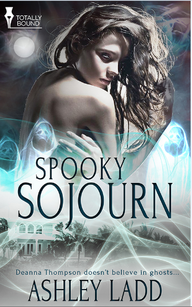 Click the image to buy! Someone’s trying to kill Deanna, but is it the ghosts she doesn’t believe in, the rich socialite who might be a murderess, or someone else with a beef against The Gilroy Hotel and Resort that Deanna has just been hired to manage? The Gilroy’s owners want the ghosts, or whoever is causing the trouble at the hotel eliminated, and they are pressuring Deanna to do the job as quickly as possible. Harry DeVeaux, paranormal investigator comes highly recommended to do the job and against Deanna’s better judgment, she hires him.
Click the image to buy! Someone’s trying to kill Deanna, but is it the ghosts she doesn’t believe in, the rich socialite who might be a murderess, or someone else with a beef against The Gilroy Hotel and Resort that Deanna has just been hired to manage? The Gilroy’s owners want the ghosts, or whoever is causing the trouble at the hotel eliminated, and they are pressuring Deanna to do the job as quickly as possible. Harry DeVeaux, paranormal investigator comes highly recommended to do the job and against Deanna’s better judgment, she hires him.
Although Deanna thinks Harry’s crazy for believing in ghosts and Harry thinks Deanna has a closed mind to the possibilities of ghosts and they highly annoy each other, sparks fly. Deanna can’t help but fantasize about Harry and inspired by a romance convention visiting her hotel, writes her fantasies in a private blog that Harry finds, hacks, and reads. Ooh la la!
Excerpt from 'Spooky Sojourn'
Drawing in a long, shuddering breath, he looked heavenwards and crossed his fingers behind his back hoping she wouldn’t throw something at him, hoping she’d be okay with his admission. “I found your blog and read it.”
Paling, the blood fled from her flesh and her eyes looked like sooty coals against her face. Her gaze clashed with his and held. “How did you find it? I used a pseudonym and I put it on privacy settings.”
He screwed up his lips, and scrubbed his hand over his face, preparing to tell more painful truths. “I’m a bit of a hacker and I like to research the people I’m working with.” Not sure she’d be receptive to his theory, he left out the part that he thought the ghosts led him to her sight. He thought they were closet romantics. He wouldn’t be surprised if they’d locked them into the room now to force them into some alone time together.
When a tsunami of emotions flitted across her face he tried to read them. Fury. Embarrassment. Lust?
“You investigated me? You read my private musings?”
“You wrote about me? In some very intimate ways. At least I presume it was me since you used my name.” He fixed her with a piercing gaze. “Did you?”
A pregnant pause rent the air as she veiled her eyes from his view. Finally, she smoothed her skirt against her legs and admitted, “Yes. I have very mixed feelings about you. You make me crazy the way we argue, the way you believe in ghosts, and yet I find myself thinking about you, fantasizing about you.”
Taking heart in the last part even if he wasn’t sure he liked the first, he said with a lopsided grin, “You fantasize about me much?”
As if she suddenly got bold, she sidled up to him with a mischievous twinkle in her eyes and ran the tip of her finger down his chest. “Aren’t my blogs proof? The question is, do you fantasize about me?”
A big thank you to Ashley Ladd!
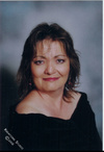 Ashley Ladd Thank you to Ashley Ladd for a great post. Ashley lives in South Florida with her husband, five children, and beloved pets. She loves the water, animals (especially cats), and playing on the computer.
Ashley Ladd Thank you to Ashley Ladd for a great post. Ashley lives in South Florida with her husband, five children, and beloved pets. She loves the water, animals (especially cats), and playing on the computer.
She's been told she has a wicked sense of humor and often incorporates humor and adventure into her books. She also adores very spicy romance, which she weaves into her stories. You can find out more about Ashley via these links: Facebook, Twitter, Goodreads, Shelfari and Amazon, as well as Ashley's blog.
Subscribe to my newsletter and blog!
 I'd love to stay in contact with you! Why not sign up for my newsletter? It's an occasional communication to keep you informed about my new novel releases. I respect your privacy and will never sell your details to any third parties. To sign up, enter your details in the form at the top of the sidebar.
I'd love to stay in contact with you! Why not sign up for my newsletter? It's an occasional communication to keep you informed about my new novel releases. I respect your privacy and will never sell your details to any third parties. To sign up, enter your details in the form at the top of the sidebar.
And if you've enjoyed this blog post, how about subscribing via RSS feed or email? Either click the links in my blog sidebar or sign up via Networked Blogs, also in the sidebar. It'll be great to have you on board!
I'm delighted to welcome novelist Ashley Ladd to my blog as a guest poster. As a special post for Hallowe'en and in keeping with her latest paranormal novel 'Spooky Sojourn', Ashley has written a post about haunted hotels and novels that feature them.
A ghost tour through a haunted hotel
 'Spooky Sojourn' by Ashley Ladd My October release, 'Spooky Sojourn’, is about a (surprise, surprise) haunted hotel. It was inspired by my stay several years ago at the French Lick Springs Resort in French Lick, Indiana. I was there for a romance convention. Supposedly Al Capone and his cronies hung out there in the thirties and forties when things got too hot in Chicago. Surprisingly, legend has it that it is the hotel’s former owner, Thomas Taggart, who is the ghost haunting the famous hotel, not the gangsters.
'Spooky Sojourn' by Ashley Ladd My October release, 'Spooky Sojourn’, is about a (surprise, surprise) haunted hotel. It was inspired by my stay several years ago at the French Lick Springs Resort in French Lick, Indiana. I was there for a romance convention. Supposedly Al Capone and his cronies hung out there in the thirties and forties when things got too hot in Chicago. Surprisingly, legend has it that it is the hotel’s former owner, Thomas Taggart, who is the ghost haunting the famous hotel, not the gangsters.Since we were a group of romance writers and things like that fascinate us, we were cool for the most part with staying at a haunted hotel. In fact, we even begged the hotel staff to take us on a ghost tour. We’d heard about the haunted red elevator that went to the thirteenth floor where Thomas was purported to ride his ghostly horse through the halls. We searched everywhere for the red elevator but didn’t we couldn’t find it.
Finally, one of the hotel employees took us on a ghost tour on a dark and spooky evening. We started in the basement where, low and behold, we found the red elevator. Wouldn’t you know it, that was the same elevator shaft that was across from my room and I was staying alone. I was pretty freaked out.
So we followed the hotel employee around like little ducks in a row, holding hands, holding our breath, hoping Jack Nicholson with his beady eyes and evil grin didn’t pop out at us when one of the writers grabbed someone and yelled “boo!” We all started yelling, jumping, and clutching our throats.
Riding a spirit horse on dark, stormy nights
 The Overlook Hotel, from 'The Shining' Popular rumor has it that Thomas Taggart’s ghost rides his spirit horse on the cordoned off thirteenth floor on dark, stormy nights. That part of the floor is locked off, thus we weren’t permitted entry. Still, we were scared just standing on the other side of the door to the famous haunted hallway. If we could have toured the illicit wing, we would have in a heartbeat.
The Overlook Hotel, from 'The Shining' Popular rumor has it that Thomas Taggart’s ghost rides his spirit horse on the cordoned off thirteenth floor on dark, stormy nights. That part of the floor is locked off, thus we weren’t permitted entry. Still, we were scared just standing on the other side of the door to the famous haunted hallway. If we could have toured the illicit wing, we would have in a heartbeat.Ever since, I promised myself I would write a story about a haunted hotel. I really thought I’d do so shortly after that convention. No, it took about twelve years for ‘Spooky Sojourn’ to be born. What a long labor! But it was worthwhile and I hope you’ll think so too.
‘Spooky Sojourn’ isn’t the only story featuring haunted hotels and houses.
Everybody’s heard of ‘The Shining’ by Stephen King, starring Jack Nicholson. Does “redrum” in dripping blood ring any bells? If somehow this book and movie have escaped your notice, see it in October around Halloween. You’ll be guaranteed to be frightened out of your wits.
Another famous book and movie about a haunted house if not exactly in a hotel, is ‘The Amityville Horror’ by Jay Anson. Who hasn’t heard of it? It only has 55,000 reviews on Goodreads.
I Googled for a list of the best haunted hotel books and I found this list on Goodreads.
There are others that come recommended as well. Here are a couple:
'The Haunted' by Niki Valentine
 Arriving in the Scottish highlands, Martin and Sue decide to escape their luxury hotel, heading out for a night of back-to-basics living in an abandoned shack. When a storm strikes, they find themselves stranded in the simple hut, miles from anywhere and completely isolated. As gentle bickering leads to violent arguments, Sue starts to sense they are not truly alone - especially when a deep, dark presence seems to takes hold of the pair. With no way to escape, Sue and Martin must try to hold on to their sanity as the shelter quickly becomes a prison - and their thoughts begin to turn murderous...
Arriving in the Scottish highlands, Martin and Sue decide to escape their luxury hotel, heading out for a night of back-to-basics living in an abandoned shack. When a storm strikes, they find themselves stranded in the simple hut, miles from anywhere and completely isolated. As gentle bickering leads to violent arguments, Sue starts to sense they are not truly alone - especially when a deep, dark presence seems to takes hold of the pair. With no way to escape, Sue and Martin must try to hold on to their sanity as the shelter quickly becomes a prison - and their thoughts begin to turn murderous...'The Haunted Hotel' by Wilkie Collins

Is there no explanation of the mystery of The Haunted Hotel? Is The Haunted Hotel the tale of a haunting -- or the tale of a crime? The ghost of Lord Montbarry haunts the Palace Hotel in Venice --- or does it? Montbarry's beautiful-yet-terrifying wife, the Countess Narona, and her erstwhile brother are the center of the terror that fills the Palace Hotel. Are their malefactions at the root of the haunting -- or is there something darker, something much more unknowable at work?
Get into the spirit of the season
During this season of Halloween and ghosts and other things that go bump in the night, I’m going to check out these books. What better way to get into the spirit of the season than to immerse yourself in a good haunted hotel/house story, except perhaps, to write one, like I did?
More about my novel Spooky Sojourn'
 Click the image to buy! Someone’s trying to kill Deanna, but is it the ghosts she doesn’t believe in, the rich socialite who might be a murderess, or someone else with a beef against The Gilroy Hotel and Resort that Deanna has just been hired to manage? The Gilroy’s owners want the ghosts, or whoever is causing the trouble at the hotel eliminated, and they are pressuring Deanna to do the job as quickly as possible. Harry DeVeaux, paranormal investigator comes highly recommended to do the job and against Deanna’s better judgment, she hires him.
Click the image to buy! Someone’s trying to kill Deanna, but is it the ghosts she doesn’t believe in, the rich socialite who might be a murderess, or someone else with a beef against The Gilroy Hotel and Resort that Deanna has just been hired to manage? The Gilroy’s owners want the ghosts, or whoever is causing the trouble at the hotel eliminated, and they are pressuring Deanna to do the job as quickly as possible. Harry DeVeaux, paranormal investigator comes highly recommended to do the job and against Deanna’s better judgment, she hires him. Although Deanna thinks Harry’s crazy for believing in ghosts and Harry thinks Deanna has a closed mind to the possibilities of ghosts and they highly annoy each other, sparks fly. Deanna can’t help but fantasize about Harry and inspired by a romance convention visiting her hotel, writes her fantasies in a private blog that Harry finds, hacks, and reads. Ooh la la!
Excerpt from 'Spooky Sojourn'
Drawing in a long, shuddering breath, he looked heavenwards and crossed his fingers behind his back hoping she wouldn’t throw something at him, hoping she’d be okay with his admission. “I found your blog and read it.”
Paling, the blood fled from her flesh and her eyes looked like sooty coals against her face. Her gaze clashed with his and held. “How did you find it? I used a pseudonym and I put it on privacy settings.”
He screwed up his lips, and scrubbed his hand over his face, preparing to tell more painful truths. “I’m a bit of a hacker and I like to research the people I’m working with.” Not sure she’d be receptive to his theory, he left out the part that he thought the ghosts led him to her sight. He thought they were closet romantics. He wouldn’t be surprised if they’d locked them into the room now to force them into some alone time together.
When a tsunami of emotions flitted across her face he tried to read them. Fury. Embarrassment. Lust?
“You investigated me? You read my private musings?”
“You wrote about me? In some very intimate ways. At least I presume it was me since you used my name.” He fixed her with a piercing gaze. “Did you?”
A pregnant pause rent the air as she veiled her eyes from his view. Finally, she smoothed her skirt against her legs and admitted, “Yes. I have very mixed feelings about you. You make me crazy the way we argue, the way you believe in ghosts, and yet I find myself thinking about you, fantasizing about you.”
Taking heart in the last part even if he wasn’t sure he liked the first, he said with a lopsided grin, “You fantasize about me much?”
As if she suddenly got bold, she sidled up to him with a mischievous twinkle in her eyes and ran the tip of her finger down his chest. “Aren’t my blogs proof? The question is, do you fantasize about me?”
A big thank you to Ashley Ladd!
 Ashley Ladd Thank you to Ashley Ladd for a great post. Ashley lives in South Florida with her husband, five children, and beloved pets. She loves the water, animals (especially cats), and playing on the computer.
Ashley Ladd Thank you to Ashley Ladd for a great post. Ashley lives in South Florida with her husband, five children, and beloved pets. She loves the water, animals (especially cats), and playing on the computer.She's been told she has a wicked sense of humor and often incorporates humor and adventure into her books. She also adores very spicy romance, which she weaves into her stories. You can find out more about Ashley via these links: Facebook, Twitter, Goodreads, Shelfari and Amazon, as well as Ashley's blog.
Subscribe to my newsletter and blog!
 I'd love to stay in contact with you! Why not sign up for my newsletter? It's an occasional communication to keep you informed about my new novel releases. I respect your privacy and will never sell your details to any third parties. To sign up, enter your details in the form at the top of the sidebar.
I'd love to stay in contact with you! Why not sign up for my newsletter? It's an occasional communication to keep you informed about my new novel releases. I respect your privacy and will never sell your details to any third parties. To sign up, enter your details in the form at the top of the sidebar.And if you've enjoyed this blog post, how about subscribing via RSS feed or email? Either click the links in my blog sidebar or sign up via Networked Blogs, also in the sidebar. It'll be great to have you on board!
Published on October 31, 2014 02:16
October 23, 2014
'Where Do You Get Your Ideas?'
By Maggie James
The most popular question to ask novelists
 Novelists get asked this question more than any other. It's as if people think there are certain, very specific, stimuli that give rise to ideas for novel plots, and others that don't. Not so! Inspiration can be found everywhere, if you know where to look. When I'm asked where I get my ideas, I say 'from the world around me.' Writers tend to be great at observation, particularly people watching. Like many authors, I always have to hand a way of capturing ideas when they strike, whether it's via my phone or pen and paper. Right now, I have over fifty plot possibilities listed on my computer, and I'm betting that other authors may have double or triple that number.
Novelists get asked this question more than any other. It's as if people think there are certain, very specific, stimuli that give rise to ideas for novel plots, and others that don't. Not so! Inspiration can be found everywhere, if you know where to look. When I'm asked where I get my ideas, I say 'from the world around me.' Writers tend to be great at observation, particularly people watching. Like many authors, I always have to hand a way of capturing ideas when they strike, whether it's via my phone or pen and paper. Right now, I have over fifty plot possibilities listed on my computer, and I'm betting that other authors may have double or triple that number.
Novelists are capable of weaving plot ideas from virtually any situation. Take a simple example. I'm in a cafe, staring out of the window, and I spot a woman crossing the road. She's hurrying, her expression clouded; a small girl is clutching her hand. Immediately, this sparks several plot possibilities. Where does she need to get to so fast, and why? Is she running from something or someone? If so, what or whom? Is the child her own, or has she snatched her? What's causing her to look so worried? One very ordinary scenario, but with so much potential!
Posing questions is a useful tactic
 That's not to say every idea is worthy of being turned into a full-length book. Many aren't. An idea needs to be capable of sustaining characters and plot, and some might be better suited to a short story or subplot. When the right idea strikes, though, it's an amazing moment, at least for me. I get a strong gut instinct, telling me 'this is IT!' Intense excitement follows; for hours afterwards, my brain won't stop buzzing with ways to develop the idea into a novel.
That's not to say every idea is worthy of being turned into a full-length book. Many aren't. An idea needs to be capable of sustaining characters and plot, and some might be better suited to a short story or subplot. When the right idea strikes, though, it's an amazing moment, at least for me. I get a strong gut instinct, telling me 'this is IT!' Intense excitement follows; for hours afterwards, my brain won't stop buzzing with ways to develop the idea into a novel.
Television news and the press are useful for gathering ideas. Say, for example, I read about a hit-and-run accident. I immediately focus on the emotions involved, posing questions such as 'what if?' and 'how would that feel?' What mental turmoil must the driver be experiencing? Was he/she concerned about financial problems/their marriage/work issues, leading to careless driving? What will the consequences be? How is the victim's family coping? All rich sources of inspiration for the plot or subplot of a future novel!
Themes as a source of inspiration
 Something else I find works well is to consider themes that appeal, ones evoking strong emotions. I turn a subject over in my brain, spinning out from a one-word premise, such as obsession, all the possibilities that arise. A mental mind map, if you like!
Something else I find works well is to consider themes that appeal, ones evoking strong emotions. I turn a subject over in my brain, spinning out from a one-word premise, such as obsession, all the possibilities that arise. A mental mind map, if you like!
For my fifth novel, I'm drawn to the theme of betrayal. Duplicity elicits fierce emotions, from a desire for revenge to suicidal impulses. How did this idea originate? Television again. I watched a BBC documentary on the subject of con artists. As the sad stories unfolded, that familiar gut feeling hit me hard - YES! I knew I'd found the material for a future novel plot. I've yet to flesh out the story and characters, but my mind's buzzing with possibilities.
Other potential sources of inspiration? This doesn't work for me, but many writers report using daydreaming or dreams themselves to spark their creativity. One of my novelist friends told me the plot of her first book came to her as she slept. Others say meditation or creative visualisation helps.
Enter Plot Monkey! Just for amusement...
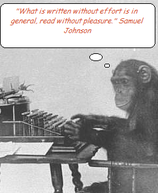 For fun last year, I tried out a piece of software (no longer available) called Plot Monkey. It's a random idea generator, based on who, what, how, when and where. Using those criteria, or whichever ones you select, it generates plot ideas. The results are hilarious. Take this gem it produced:
For fun last year, I tried out a piece of software (no longer available) called Plot Monkey. It's a random idea generator, based on who, what, how, when and where. Using those criteria, or whichever ones you select, it generates plot ideas. The results are hilarious. Take this gem it produced:
Two small boys wipe out an outlaw gang using a hammer to win fame during the civil war in Australia.
Well, that's expanded my education! I was unaware Australia ever had a civil war...
Or this: A herpetologist tries to destroy an Army base by being unfaithful to hide the truth during the civil war alongside a boat.
Looks like our resident monkey has a thing for civil conflict...
Here's my favourite, seeing as my forthcoming novel, The Second Captive, examines Stockholm syndrome:
A person suffering from Stockholm Syndrome plays a deadly game with a hack saw to prove a point in the future in the desert.
Nope, no hack saws or deserts in The Second Captive! Sorry, Plot Monkey, I'll carry on getting ideas as and when they arise - you stick to finding your next banana!
How would it feel to discover you'd been abducted as a child?
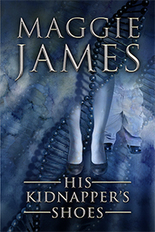 Click the image! To illustrate the diverse sources of novel ideas, let's look at how I got the inspiration for my own books, starting with His Kidnapper's Shoes. In 2010, I was chatting with fellow travellers in Vietnam, discussing what happens when children disappear. I ventured the opinion that most, sadly, are killed by opportunistic predators. One woman disagreed. 'I suspect sometimes they're stolen to order,' she said. 'For childless couples, who, for whatever reason, can't adopt.'
Click the image! To illustrate the diverse sources of novel ideas, let's look at how I got the inspiration for my own books, starting with His Kidnapper's Shoes. In 2010, I was chatting with fellow travellers in Vietnam, discussing what happens when children disappear. I ventured the opinion that most, sadly, are killed by opportunistic predators. One woman disagreed. 'I suspect sometimes they're stolen to order,' she said. 'For childless couples, who, for whatever reason, can't adopt.'
That got me thinking. What would it be like to discover you'd been abducted as a child? How would someone react on finding out the woman who raised them is a kidnapper? I love examining strong emotions, and such a situation would spark off intense feelings: anger, betrayal, and the desire to unearth the truth.
When obsessive love leads to murder
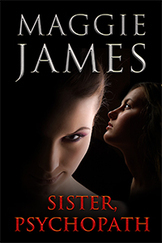 Click the image! Let's turn now to my second novel, Sister, Psychopath. Several years ago, I attended a one-day writing course, during which the conversation turned to a real-life murder case. Our teacher told us about a woman who became obsessed with a man, believing herself in love. So much so that she decided to kill his wife and child in the hope of marrying him. She carried out her plan, but her daughter suspected what she'd done, leading to her mother's arrest and conviction.
Click the image! Let's turn now to my second novel, Sister, Psychopath. Several years ago, I attended a one-day writing course, during which the conversation turned to a real-life murder case. Our teacher told us about a woman who became obsessed with a man, believing herself in love. So much so that she decided to kill his wife and child in the hope of marrying him. She carried out her plan, but her daughter suspected what she'd done, leading to her mother's arrest and conviction.
When I heard this, I knew I had the basis for a novel. Lots of questions jumped out at me. How would it feel to be the daughter in this situation? Or the woman herself, obsessed to the point of murder? What about the subject of her infatuation, a man now bereft of his family?
In the end, I centred on the daughter's story by creating the character of Megan Copeland, and changed the events to attempted murder, with no child involved. The novel ended up taking a different route, concentrating instead on the relationship between Megan and her sociopathic half-sister, Chloe. Psychopathy always provides plenty of material for novelists!
Discovering someone you love has a secret past
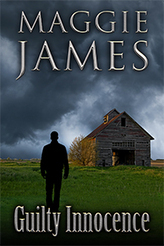 Click the image! I don't remember the exact source of inspiration for my third novel, Guilty Innocence. I suspect I heard about some terrible crime via the television news, because I do recall the idea came from the premise: how would it feel to discover someone you love has a secret past? That sparked a host of other questions. What could be so awful you'd need to keep it secret? How might the truth be revealed?
Click the image! I don't remember the exact source of inspiration for my third novel, Guilty Innocence. I suspect I heard about some terrible crime via the television news, because I do recall the idea came from the premise: how would it feel to discover someone you love has a secret past? That sparked a host of other questions. What could be so awful you'd need to keep it secret? How might the truth be revealed?
Serious crime seemed the best reason for such a cover-up, which begged the question: what, exactly? The answer was child murder; no other crime incites such passions in the public mind. The twist is that Mark Slater is innocent of the killing of two-year-old Abby Morgan. This doesn't mean he's without his demons to slay; his wrongful conviction has always eaten away at him. In addition, he has his nemesis, the twisted and violent Adam Campbell, to confront...
When victims become emotionally attached to their abusers
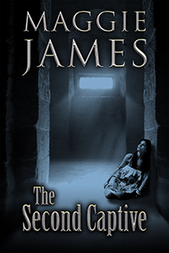 Available soon! Finally, let's look at my fourth novel, The Second Captive. This has not yet been published, although it soon will be. The book examines the fascinating psychological condition known as Stockholm syndrome, in which victims become emotionally attached to their abusers. Fertile ground for novelists!
Available soon! Finally, let's look at my fourth novel, The Second Captive. This has not yet been published, although it soon will be. The book examines the fascinating psychological condition known as Stockholm syndrome, in which victims become emotionally attached to their abusers. Fertile ground for novelists!
The inspiration for this book came from hearing about a young woman who returned home after an absence of several years, in a distressed state, but wouldn't say what had happened to her. I was instantly intrigued. Why was she refusing to talk? Where had she been, and with whom? Stockholm syndrome came to mind as the answer. A vulnerable individual, held captive in an abusive situation, who's too ashamed after her escape to reveal the truth. And so the character of Beth Sutton was born, along with the disturbed and dangerous Dominic Perdue, her captor...
For news of The Second Captive's publication, why not sign up for my newsletter? Enter your details in the box at the top of the side bar.
Let's hear from you!
I hope you have enjoyed this blog post, and that it's given you some insight into the creative process for fiction writers. Are there any questions you'd like to ask on the topic? If you're a writer, do you get your ideas from specific sources, such as meditation or visualisation? Leave a comment and let me know!
Subscribe to my newsletter and blog!
 I'd love to stay in contact with you! Why not sign up for my newsletter? It's an occasional communication to keep you informed about my new novel releases. I respect your privacy and will never sell your details to any third parties. To sign up, enter your details in the form at the top of the sidebar.
I'd love to stay in contact with you! Why not sign up for my newsletter? It's an occasional communication to keep you informed about my new novel releases. I respect your privacy and will never sell your details to any third parties. To sign up, enter your details in the form at the top of the sidebar.
And if you've enjoyed this blog post, how about subscribing via RSS feed or email? Either click the links in my blog sidebar or sign up via Networked Blogs, also in the sidebar. It'll be great to have you on board!
The most popular question to ask novelists
 Novelists get asked this question more than any other. It's as if people think there are certain, very specific, stimuli that give rise to ideas for novel plots, and others that don't. Not so! Inspiration can be found everywhere, if you know where to look. When I'm asked where I get my ideas, I say 'from the world around me.' Writers tend to be great at observation, particularly people watching. Like many authors, I always have to hand a way of capturing ideas when they strike, whether it's via my phone or pen and paper. Right now, I have over fifty plot possibilities listed on my computer, and I'm betting that other authors may have double or triple that number.
Novelists get asked this question more than any other. It's as if people think there are certain, very specific, stimuli that give rise to ideas for novel plots, and others that don't. Not so! Inspiration can be found everywhere, if you know where to look. When I'm asked where I get my ideas, I say 'from the world around me.' Writers tend to be great at observation, particularly people watching. Like many authors, I always have to hand a way of capturing ideas when they strike, whether it's via my phone or pen and paper. Right now, I have over fifty plot possibilities listed on my computer, and I'm betting that other authors may have double or triple that number.Novelists are capable of weaving plot ideas from virtually any situation. Take a simple example. I'm in a cafe, staring out of the window, and I spot a woman crossing the road. She's hurrying, her expression clouded; a small girl is clutching her hand. Immediately, this sparks several plot possibilities. Where does she need to get to so fast, and why? Is she running from something or someone? If so, what or whom? Is the child her own, or has she snatched her? What's causing her to look so worried? One very ordinary scenario, but with so much potential!
Posing questions is a useful tactic
 That's not to say every idea is worthy of being turned into a full-length book. Many aren't. An idea needs to be capable of sustaining characters and plot, and some might be better suited to a short story or subplot. When the right idea strikes, though, it's an amazing moment, at least for me. I get a strong gut instinct, telling me 'this is IT!' Intense excitement follows; for hours afterwards, my brain won't stop buzzing with ways to develop the idea into a novel.
That's not to say every idea is worthy of being turned into a full-length book. Many aren't. An idea needs to be capable of sustaining characters and plot, and some might be better suited to a short story or subplot. When the right idea strikes, though, it's an amazing moment, at least for me. I get a strong gut instinct, telling me 'this is IT!' Intense excitement follows; for hours afterwards, my brain won't stop buzzing with ways to develop the idea into a novel.Television news and the press are useful for gathering ideas. Say, for example, I read about a hit-and-run accident. I immediately focus on the emotions involved, posing questions such as 'what if?' and 'how would that feel?' What mental turmoil must the driver be experiencing? Was he/she concerned about financial problems/their marriage/work issues, leading to careless driving? What will the consequences be? How is the victim's family coping? All rich sources of inspiration for the plot or subplot of a future novel!
Themes as a source of inspiration
 Something else I find works well is to consider themes that appeal, ones evoking strong emotions. I turn a subject over in my brain, spinning out from a one-word premise, such as obsession, all the possibilities that arise. A mental mind map, if you like!
Something else I find works well is to consider themes that appeal, ones evoking strong emotions. I turn a subject over in my brain, spinning out from a one-word premise, such as obsession, all the possibilities that arise. A mental mind map, if you like!For my fifth novel, I'm drawn to the theme of betrayal. Duplicity elicits fierce emotions, from a desire for revenge to suicidal impulses. How did this idea originate? Television again. I watched a BBC documentary on the subject of con artists. As the sad stories unfolded, that familiar gut feeling hit me hard - YES! I knew I'd found the material for a future novel plot. I've yet to flesh out the story and characters, but my mind's buzzing with possibilities.
Other potential sources of inspiration? This doesn't work for me, but many writers report using daydreaming or dreams themselves to spark their creativity. One of my novelist friends told me the plot of her first book came to her as she slept. Others say meditation or creative visualisation helps.
Enter Plot Monkey! Just for amusement...
 For fun last year, I tried out a piece of software (no longer available) called Plot Monkey. It's a random idea generator, based on who, what, how, when and where. Using those criteria, or whichever ones you select, it generates plot ideas. The results are hilarious. Take this gem it produced:
For fun last year, I tried out a piece of software (no longer available) called Plot Monkey. It's a random idea generator, based on who, what, how, when and where. Using those criteria, or whichever ones you select, it generates plot ideas. The results are hilarious. Take this gem it produced:Two small boys wipe out an outlaw gang using a hammer to win fame during the civil war in Australia.
Well, that's expanded my education! I was unaware Australia ever had a civil war...
Or this: A herpetologist tries to destroy an Army base by being unfaithful to hide the truth during the civil war alongside a boat.
Looks like our resident monkey has a thing for civil conflict...
Here's my favourite, seeing as my forthcoming novel, The Second Captive, examines Stockholm syndrome:
A person suffering from Stockholm Syndrome plays a deadly game with a hack saw to prove a point in the future in the desert.
Nope, no hack saws or deserts in The Second Captive! Sorry, Plot Monkey, I'll carry on getting ideas as and when they arise - you stick to finding your next banana!
How would it feel to discover you'd been abducted as a child?
 Click the image! To illustrate the diverse sources of novel ideas, let's look at how I got the inspiration for my own books, starting with His Kidnapper's Shoes. In 2010, I was chatting with fellow travellers in Vietnam, discussing what happens when children disappear. I ventured the opinion that most, sadly, are killed by opportunistic predators. One woman disagreed. 'I suspect sometimes they're stolen to order,' she said. 'For childless couples, who, for whatever reason, can't adopt.'
Click the image! To illustrate the diverse sources of novel ideas, let's look at how I got the inspiration for my own books, starting with His Kidnapper's Shoes. In 2010, I was chatting with fellow travellers in Vietnam, discussing what happens when children disappear. I ventured the opinion that most, sadly, are killed by opportunistic predators. One woman disagreed. 'I suspect sometimes they're stolen to order,' she said. 'For childless couples, who, for whatever reason, can't adopt.'That got me thinking. What would it be like to discover you'd been abducted as a child? How would someone react on finding out the woman who raised them is a kidnapper? I love examining strong emotions, and such a situation would spark off intense feelings: anger, betrayal, and the desire to unearth the truth.
When obsessive love leads to murder
 Click the image! Let's turn now to my second novel, Sister, Psychopath. Several years ago, I attended a one-day writing course, during which the conversation turned to a real-life murder case. Our teacher told us about a woman who became obsessed with a man, believing herself in love. So much so that she decided to kill his wife and child in the hope of marrying him. She carried out her plan, but her daughter suspected what she'd done, leading to her mother's arrest and conviction.
Click the image! Let's turn now to my second novel, Sister, Psychopath. Several years ago, I attended a one-day writing course, during which the conversation turned to a real-life murder case. Our teacher told us about a woman who became obsessed with a man, believing herself in love. So much so that she decided to kill his wife and child in the hope of marrying him. She carried out her plan, but her daughter suspected what she'd done, leading to her mother's arrest and conviction.When I heard this, I knew I had the basis for a novel. Lots of questions jumped out at me. How would it feel to be the daughter in this situation? Or the woman herself, obsessed to the point of murder? What about the subject of her infatuation, a man now bereft of his family?
In the end, I centred on the daughter's story by creating the character of Megan Copeland, and changed the events to attempted murder, with no child involved. The novel ended up taking a different route, concentrating instead on the relationship between Megan and her sociopathic half-sister, Chloe. Psychopathy always provides plenty of material for novelists!
Discovering someone you love has a secret past
 Click the image! I don't remember the exact source of inspiration for my third novel, Guilty Innocence. I suspect I heard about some terrible crime via the television news, because I do recall the idea came from the premise: how would it feel to discover someone you love has a secret past? That sparked a host of other questions. What could be so awful you'd need to keep it secret? How might the truth be revealed?
Click the image! I don't remember the exact source of inspiration for my third novel, Guilty Innocence. I suspect I heard about some terrible crime via the television news, because I do recall the idea came from the premise: how would it feel to discover someone you love has a secret past? That sparked a host of other questions. What could be so awful you'd need to keep it secret? How might the truth be revealed?Serious crime seemed the best reason for such a cover-up, which begged the question: what, exactly? The answer was child murder; no other crime incites such passions in the public mind. The twist is that Mark Slater is innocent of the killing of two-year-old Abby Morgan. This doesn't mean he's without his demons to slay; his wrongful conviction has always eaten away at him. In addition, he has his nemesis, the twisted and violent Adam Campbell, to confront...
When victims become emotionally attached to their abusers
 Available soon! Finally, let's look at my fourth novel, The Second Captive. This has not yet been published, although it soon will be. The book examines the fascinating psychological condition known as Stockholm syndrome, in which victims become emotionally attached to their abusers. Fertile ground for novelists!
Available soon! Finally, let's look at my fourth novel, The Second Captive. This has not yet been published, although it soon will be. The book examines the fascinating psychological condition known as Stockholm syndrome, in which victims become emotionally attached to their abusers. Fertile ground for novelists!The inspiration for this book came from hearing about a young woman who returned home after an absence of several years, in a distressed state, but wouldn't say what had happened to her. I was instantly intrigued. Why was she refusing to talk? Where had she been, and with whom? Stockholm syndrome came to mind as the answer. A vulnerable individual, held captive in an abusive situation, who's too ashamed after her escape to reveal the truth. And so the character of Beth Sutton was born, along with the disturbed and dangerous Dominic Perdue, her captor...
For news of The Second Captive's publication, why not sign up for my newsletter? Enter your details in the box at the top of the side bar.
Let's hear from you!
I hope you have enjoyed this blog post, and that it's given you some insight into the creative process for fiction writers. Are there any questions you'd like to ask on the topic? If you're a writer, do you get your ideas from specific sources, such as meditation or visualisation? Leave a comment and let me know!
Subscribe to my newsletter and blog!
 I'd love to stay in contact with you! Why not sign up for my newsletter? It's an occasional communication to keep you informed about my new novel releases. I respect your privacy and will never sell your details to any third parties. To sign up, enter your details in the form at the top of the sidebar.
I'd love to stay in contact with you! Why not sign up for my newsletter? It's an occasional communication to keep you informed about my new novel releases. I respect your privacy and will never sell your details to any third parties. To sign up, enter your details in the form at the top of the sidebar.And if you've enjoyed this blog post, how about subscribing via RSS feed or email? Either click the links in my blog sidebar or sign up via Networked Blogs, also in the sidebar. It'll be great to have you on board!
Published on October 23, 2014 06:43
October 16, 2014
Author Interview - Craig Robertson
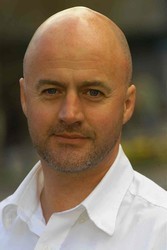 I'm delighted to be interviewing bestselling Scottish novelist Craig Robertson for my blog today. A former journalist, Craig Robertson had a 20-year career with a Scottish Sunday newspaper before becoming a full-time author. He interviewed three Prime Ministers, reported on major stories including 9/11, Dunblane, the Omagh bombing and the disappearance of Madeleine McCann. He was pilloried on breakfast television, beat Oprah Winfrey to a major scoop, spent time on Death Row in the USA and dispensed polio drops in the backstreets of India.
I'm delighted to be interviewing bestselling Scottish novelist Craig Robertson for my blog today. A former journalist, Craig Robertson had a 20-year career with a Scottish Sunday newspaper before becoming a full-time author. He interviewed three Prime Ministers, reported on major stories including 9/11, Dunblane, the Omagh bombing and the disappearance of Madeleine McCann. He was pilloried on breakfast television, beat Oprah Winfrey to a major scoop, spent time on Death Row in the USA and dispensed polio drops in the backstreets of India.His gritty crime novels are set on the mean streets of contemporary Glasgow. His first novel, 'Random', was shortlisted for the 2010 CWA New Blood Dagger, longlisted for the 2011 Crime Novel of the Year and was a Sunday Times bestseller. He is also the author of a series of novels featuring crime scene photographer Tony Winter and Detective Sergeant Rachel Narey; 'Snapshot', 'Cold Grave' and 'Witness the Dead'. I reviewed 'Witness The Dead' for my blog a while ago. You can read what I had to say about it here.
Let's get on with the questions for Craig...
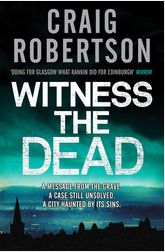 How difficult are you to live with when writing a novel? Tiger or pussy cat?
How difficult are you to live with when writing a novel? Tiger or pussy cat?
Hmm, let me ask those who have to live with me… Okay, the answer seemingly is tiger. Bad tempered, grouchy, particularly in the morning, tiger. And apparently only tiger because there wasn’t an option for Tyrannosaurus Rex. I think this is unfair and possibly slanderous but fully accept that I’m rarely a pussy cat.
It’s clear from your tweets you’re a footie fan. Any plans to draw football into future novels?
None at the moment. I’m not sure that sport translates very well into fiction, particularly crime fiction. I now realise I’ve probably just insulted a few friends so they’re the exception to this. There was quite a bit of footie tweeting recently as we had a Scottish Crime Writers v English Crime Writers match at Bloody Scotland. It would be unfair to quote the result (*cough* 13-1) but it’s fair to say that the English guys were unlucky. A lot. And often.
No zombies, elves or chick-lit!
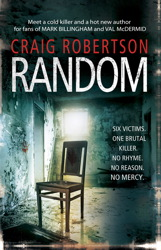 Do you see yourself branching into different genres? If so, which ones, and what do you find compelling about them?
Do you see yourself branching into different genres? If so, which ones, and what do you find compelling about them?I’m quite happy trying to get the hang of crime fiction at the moment without making things any more difficult for myself. Also, I’m not quite sure where I’d go if I did change tack as there’s a few that are no-go areas for me because I’m incredibly narrow-minded and petty. So no sci-fi, no horror, no supernatural, no zombies, no elves, no chick-lit, no cat mysteries. There I go insulting friends again. What does that leave? Children’s books possibly or maybe some as yet undiscovered genre, like food mysteries or architectural symbolism.
What’s been the most satisfying scene for you to write in any of your novels?
That’s a toughie. Ask me again in five minutes and I’ll probably give you a different answer but… maybe the opening scene of my latest, The Last Refuge. The scene itself happens around a third of the way into the book so I had to wrestle with that plus create an opening that would grab people right off the blocks. I also had to take the reader and immediately transport them to a very different location, the Faroe Islands, giving them the feel of the place without introduction. I made it difficult for myself, which thankfully I like doing, but I’m hopeful that I pulled it off and that’s pretty satisfying.
Inside the head of a crazy serial killer
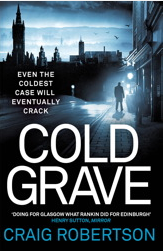 And the most difficult?
And the most difficult?The most difficult is often the most satisfying but if I had to pick another then… maybe a scene from my first novel Random. The protagonist is a serial killer and the book is written first person from his point of view, meaning we are in his crazy head for the entire journey. There’s a scene where he begins to reveal the reason for his rampage and the hurt that he suffered to get him to that place. It’s all pretty raw and I wrote from hurt of my own (hurt that didn’t lead to an outpouring of murder thankfully) and that was pretty difficult to let loose. But, as above, ultimately satisfying.
If you could take any of your characters for a drink, who would it be, and what advice would you give him or her?
Probably Tony Winter, my police photographer. My advice would be threefold. Firstly, just relax a bit and stop being so obsessed with all those photographs that you take of dead people. It’s becoming a bit creepy, dude. Secondly, up your game a bit with Rachel Winter. You’re onto a good thing there so try not to blow it. If you do, I might ask her for a drink instead. Thirdly, if you get invited to an abandoned biscuit factory anytime soon, be very careful. That’s all I’m saying.
Crime fiction as a vicarious thrill...
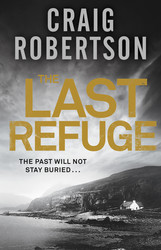 Have you used any of the situations you’ve been in as a journalist as material for any of your books? If so, tell us more.
Have you used any of the situations you’ve been in as a journalist as material for any of your books? If so, tell us more.I think writers use everything around them so yes, I’ve taken things from my journalism days. Not situations so much as people and their reactions to adversity. I interviewed a lot of people at their most vulnerable, often in bereavement after incidents such as 9/11, Dunblane and the Omagh bombing. That gave me insights that I’ve been able to use in my books. Some of those people have remained friends though so I make sure I do my best to respect the things that I’ve learned rather than exploit them. On a more practical, day-to-day level, I’ve been able to use my experience of dealing with some very bad people. And also some who weren’t journalists.
Why do you think crime fiction is so popular?
Because it’s the bestest genre in the world. I think there are a number of reasons for this. In no particular order… People liked to be scared a little and this is a way of doing it while remaining safe. It’s a vicarious thrill. Crime fiction, more than any other genre, allows us to examine society, to prod and probe it while being entertained. We see people at their most vulnerable and therefore often their most genuine and can learn much from that. Readers like a mystery, a puzzle, and it can put them at the heart of the book, in locus detectus if you like.
We all have our lines; it's up to us whether we cross them
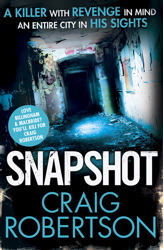 Are there any topics or situations you wouldn’t tackle in your novels?
Are there any topics or situations you wouldn’t tackle in your novels?
I don’t think so. Or maybe I should say that I haven’t thought of one that I’d shy away from. That being said, there’s a long way from saying I wouldn’t rule out writing about say the Holocaust or incest to actually wanting to do it. But I’m not much in favour of censorship so I’m not keen to start by censoring myself. We all have our lines and it’s up to us whether we venture to cross them.
To what extent do you plot your novels before starting writing? Do you begin with a solid plan, or do you allow the book to evolve at its own pace?
It has probably changed from book to book. I’ve done it both ways and now plot much more than I used to before. I use the whiteboard and post-its and do a whole lot of thinking before I ever type that first sentence. There’s still plenty of scope for it to change – I’m never going to get all my best ideas at the start – but I like a solid roadmap of where I’m going. Clearly there’s no right and wrong here, it’s just whatever works best for you.
Thank you, Craig!
A huge thank you to Craig Robertson for agreeing to be interviewed for my blog. You can find out more about Craig and his books here, and you can follow his footie tweets via @CraigRobertson_.
Subscribe to my newsletter and blog!
 I'd love to stay in contact with you! Why not sign up for my newsletter? It's an occasional communication to keep you informed about my new novel releases. I respect your privacy and will never sell your details to any third parties. To sign up, enter your details in the form at the top of the sidebar.
I'd love to stay in contact with you! Why not sign up for my newsletter? It's an occasional communication to keep you informed about my new novel releases. I respect your privacy and will never sell your details to any third parties. To sign up, enter your details in the form at the top of the sidebar.And if you've enjoyed this blog post, how about subscribing via RSS feed or email? Either click the links in my blog sidebar or sign up via Networked Blogs, also in the sidebar. It'll be great to have you on board!
Published on October 16, 2014 00:26



